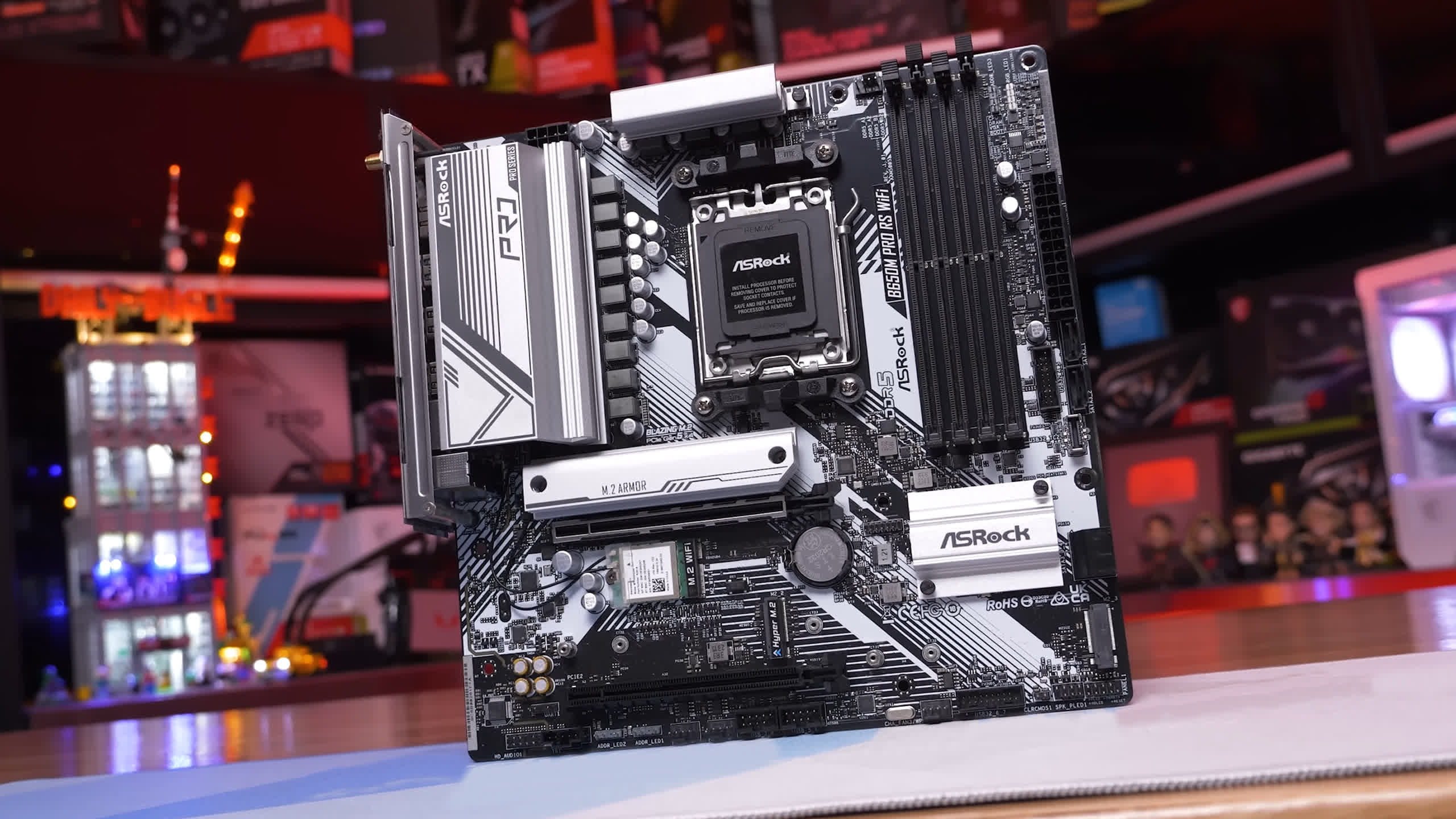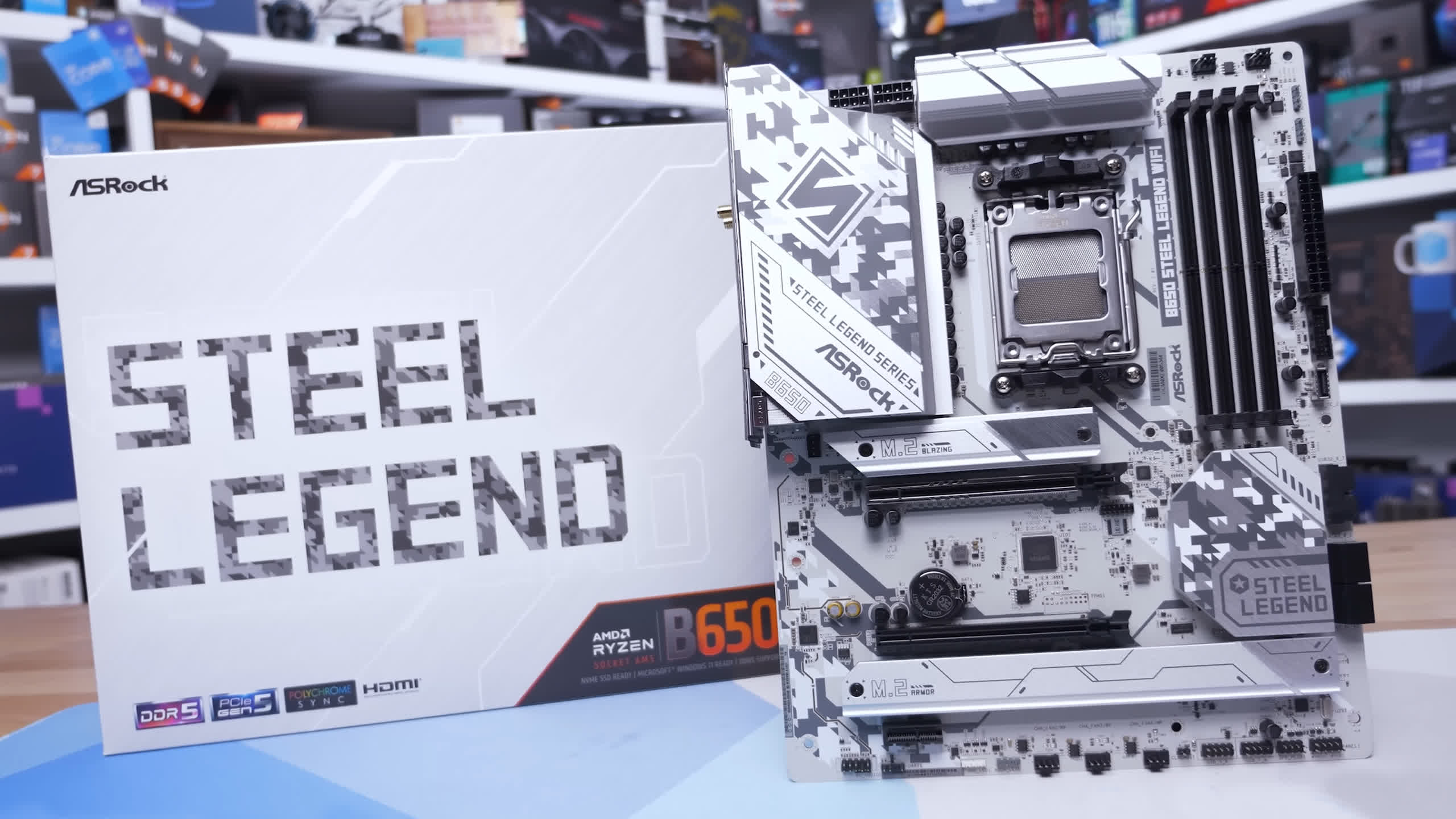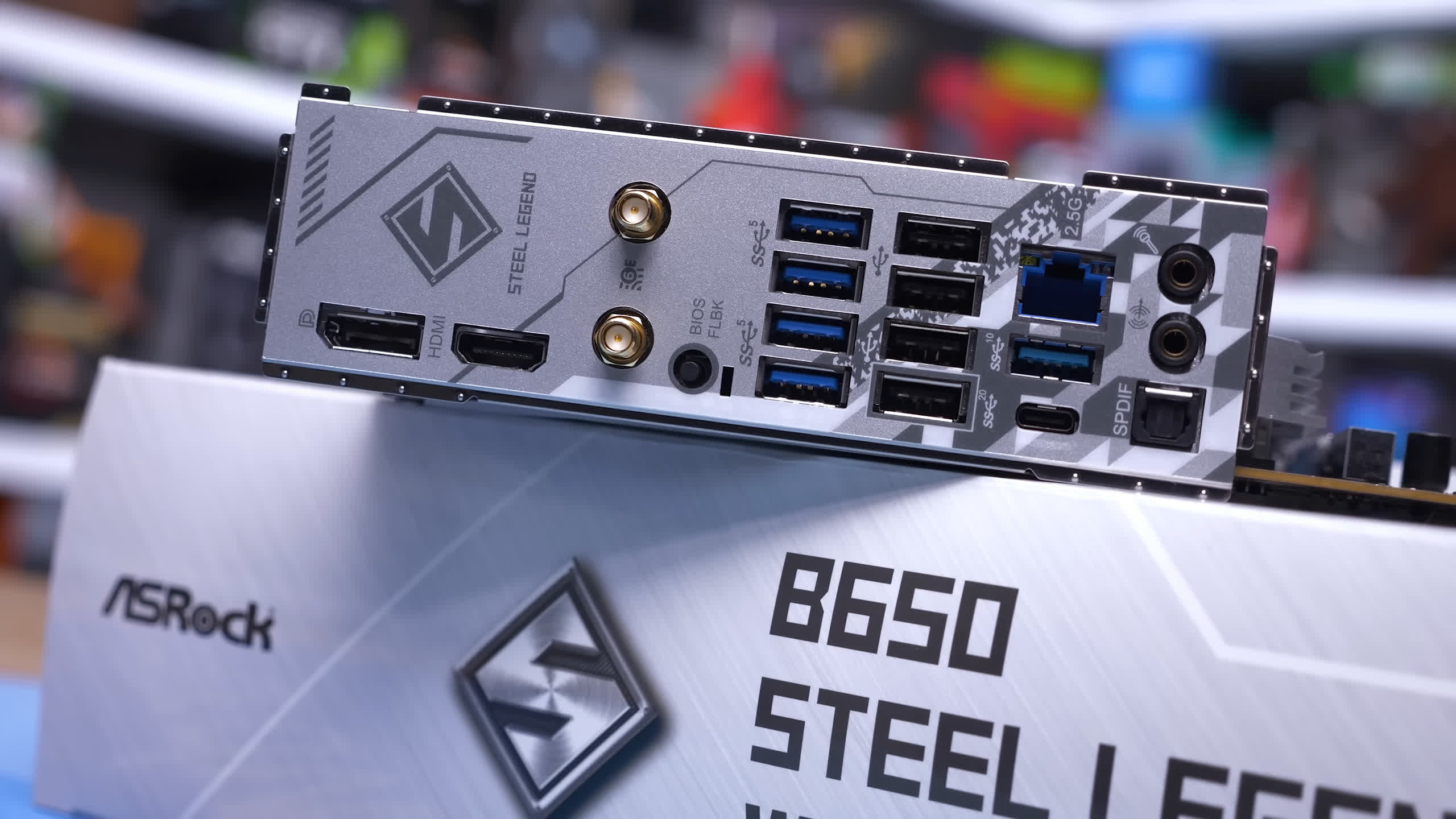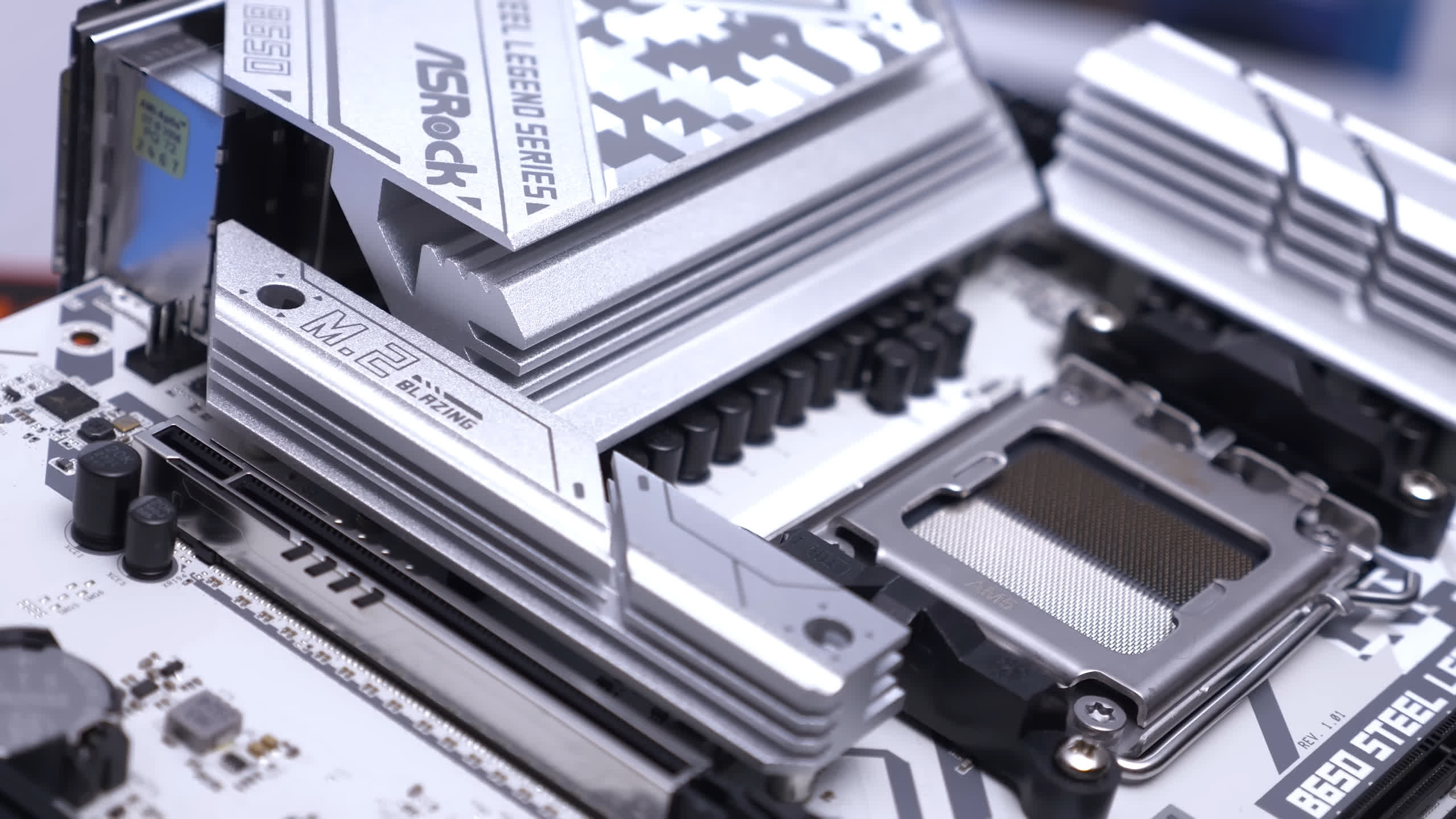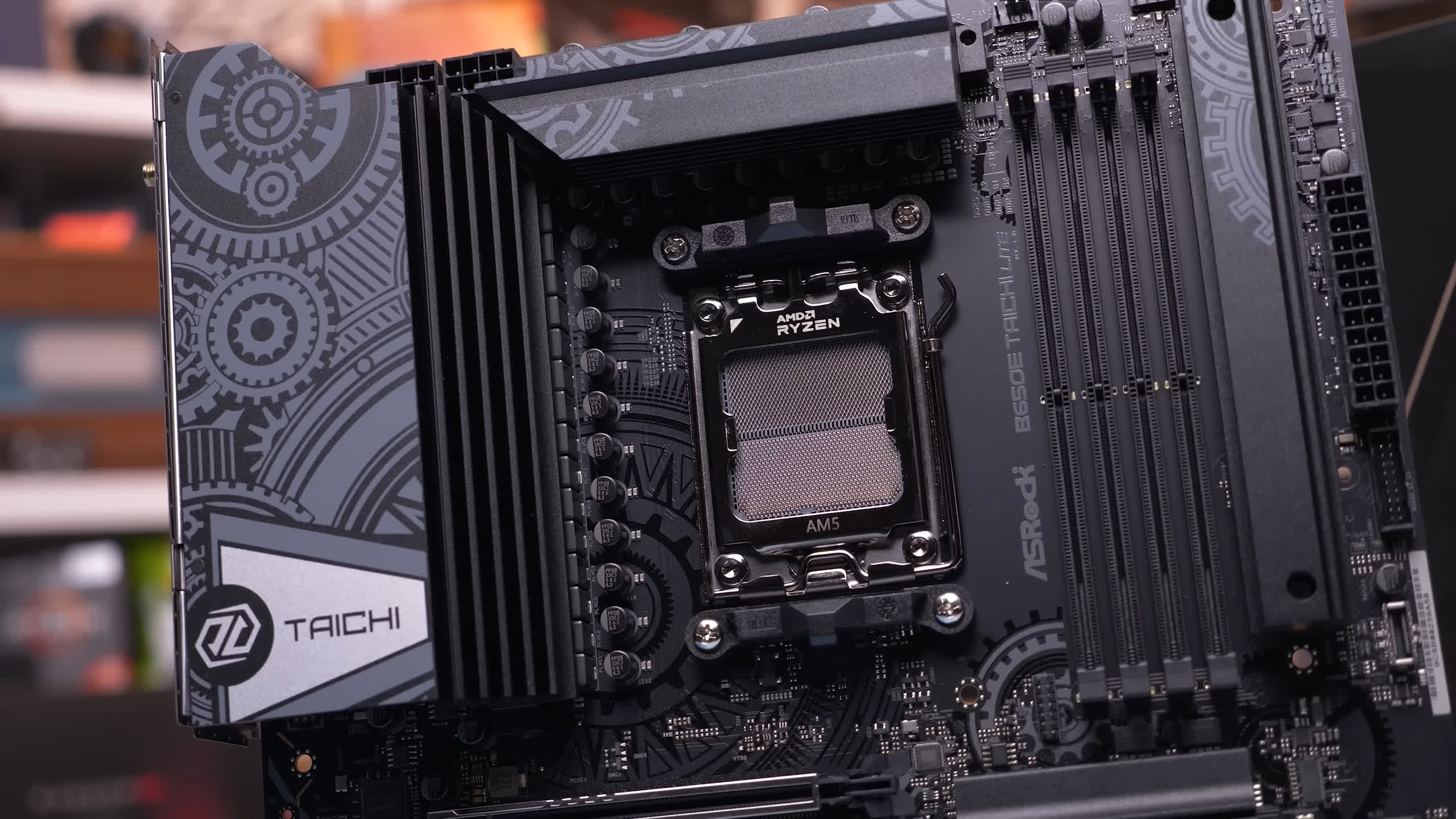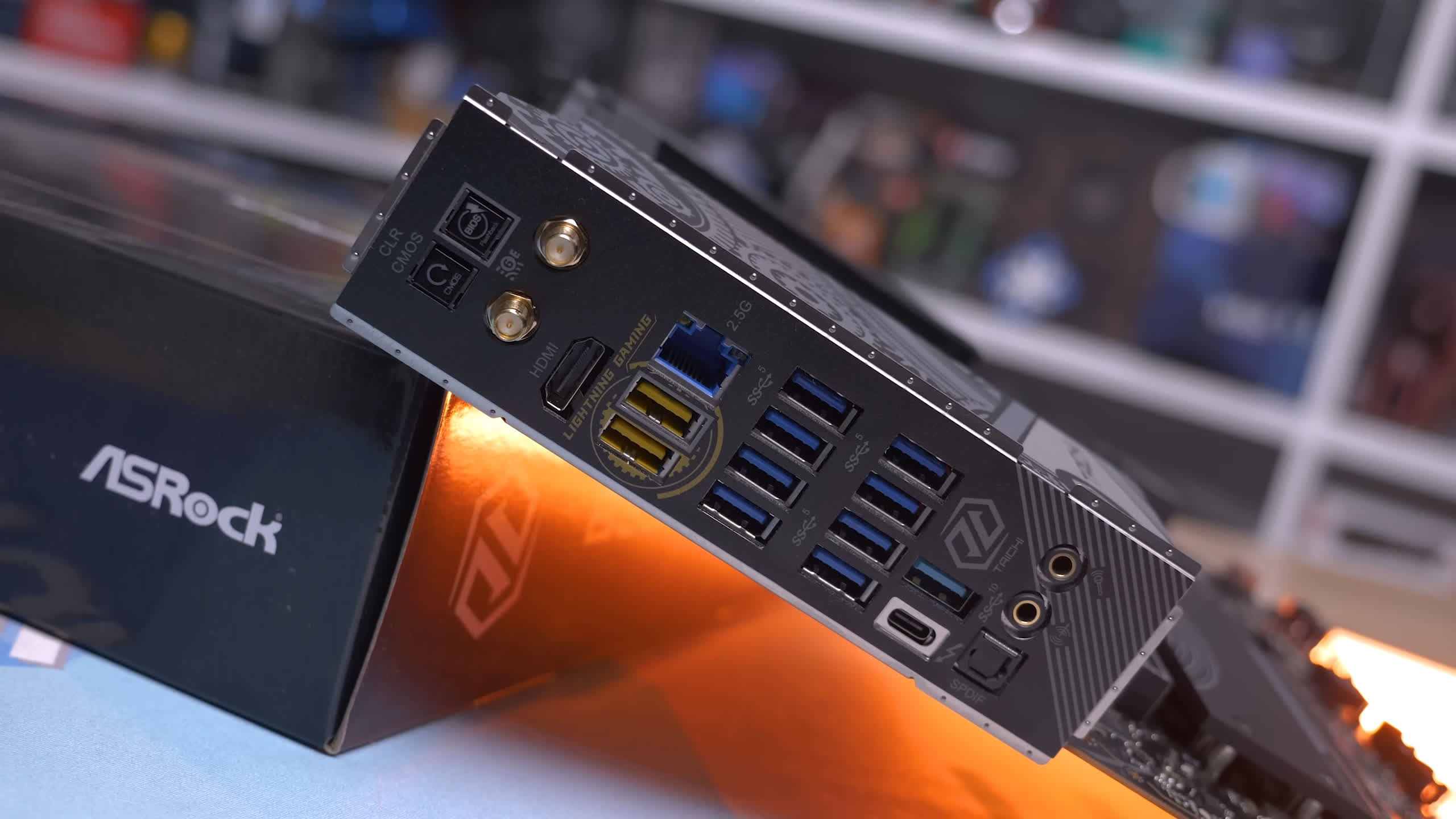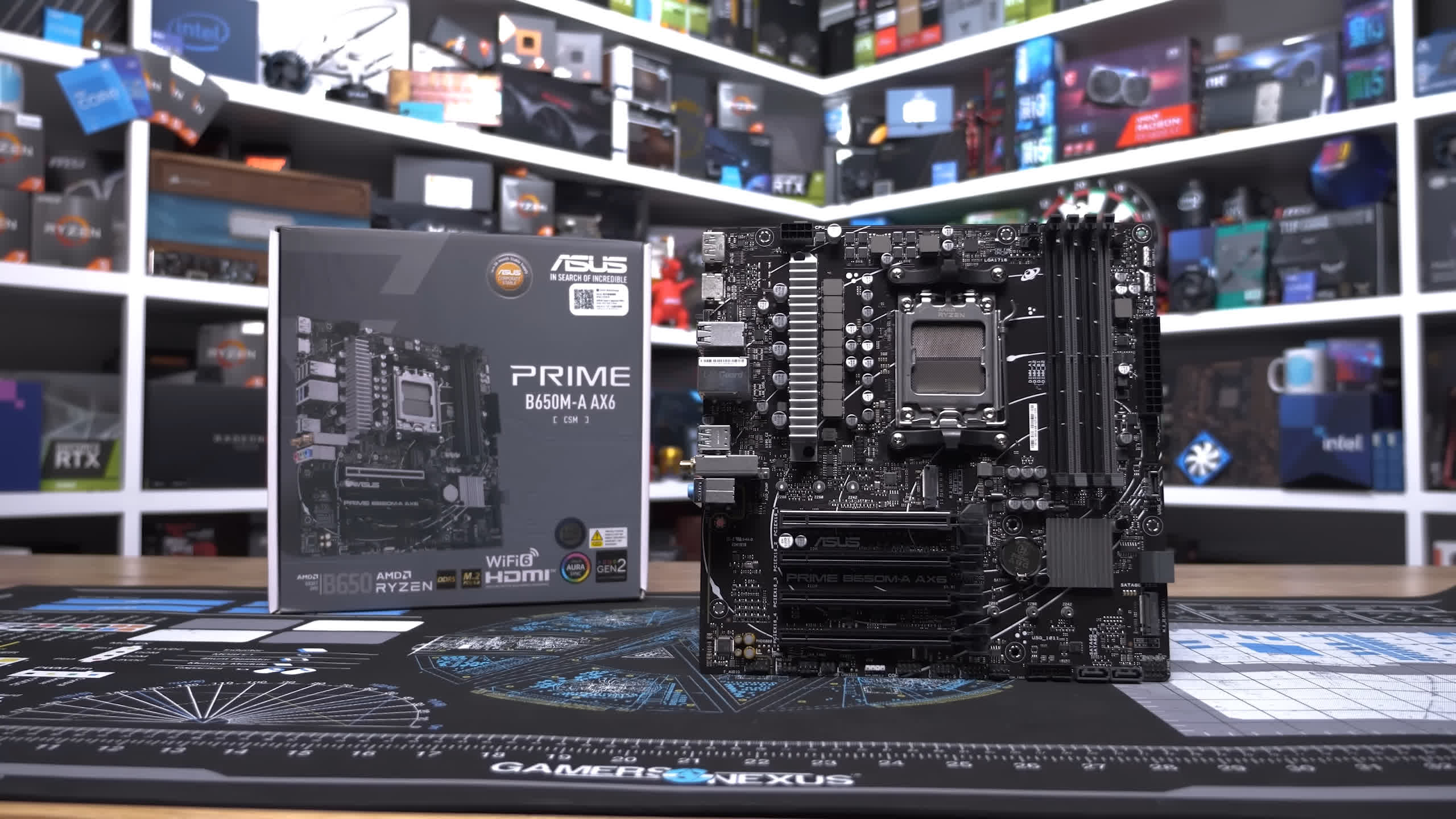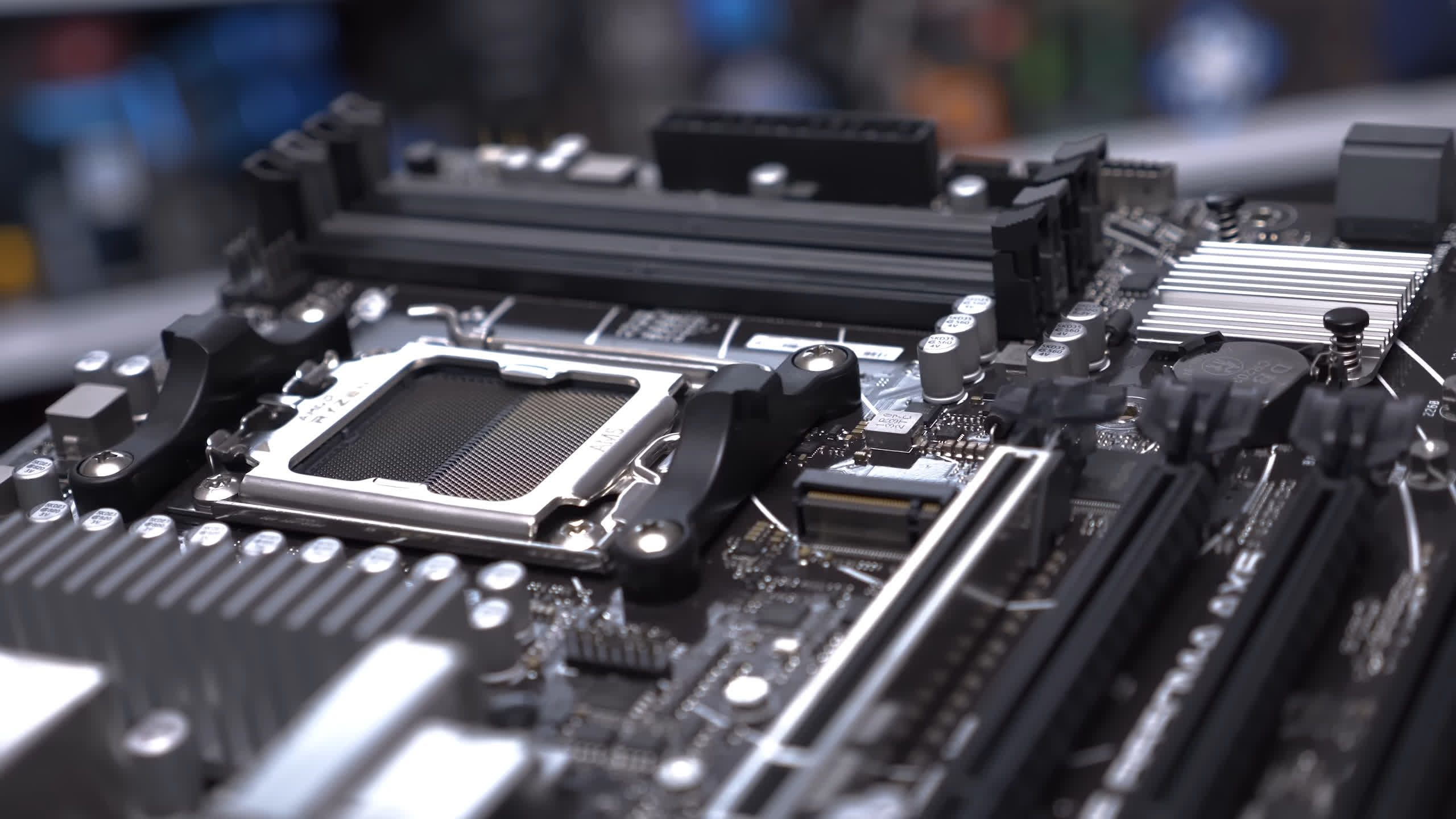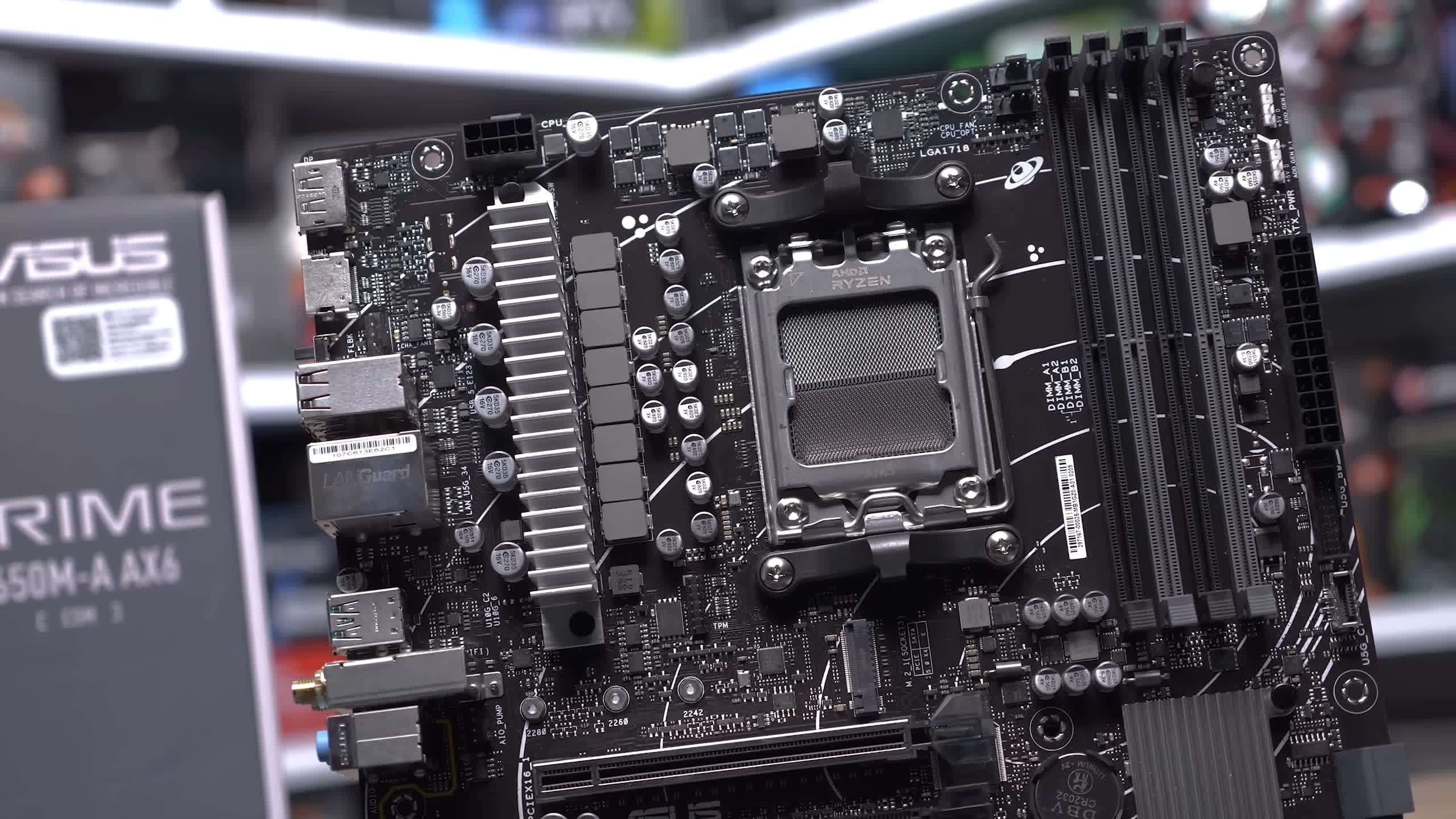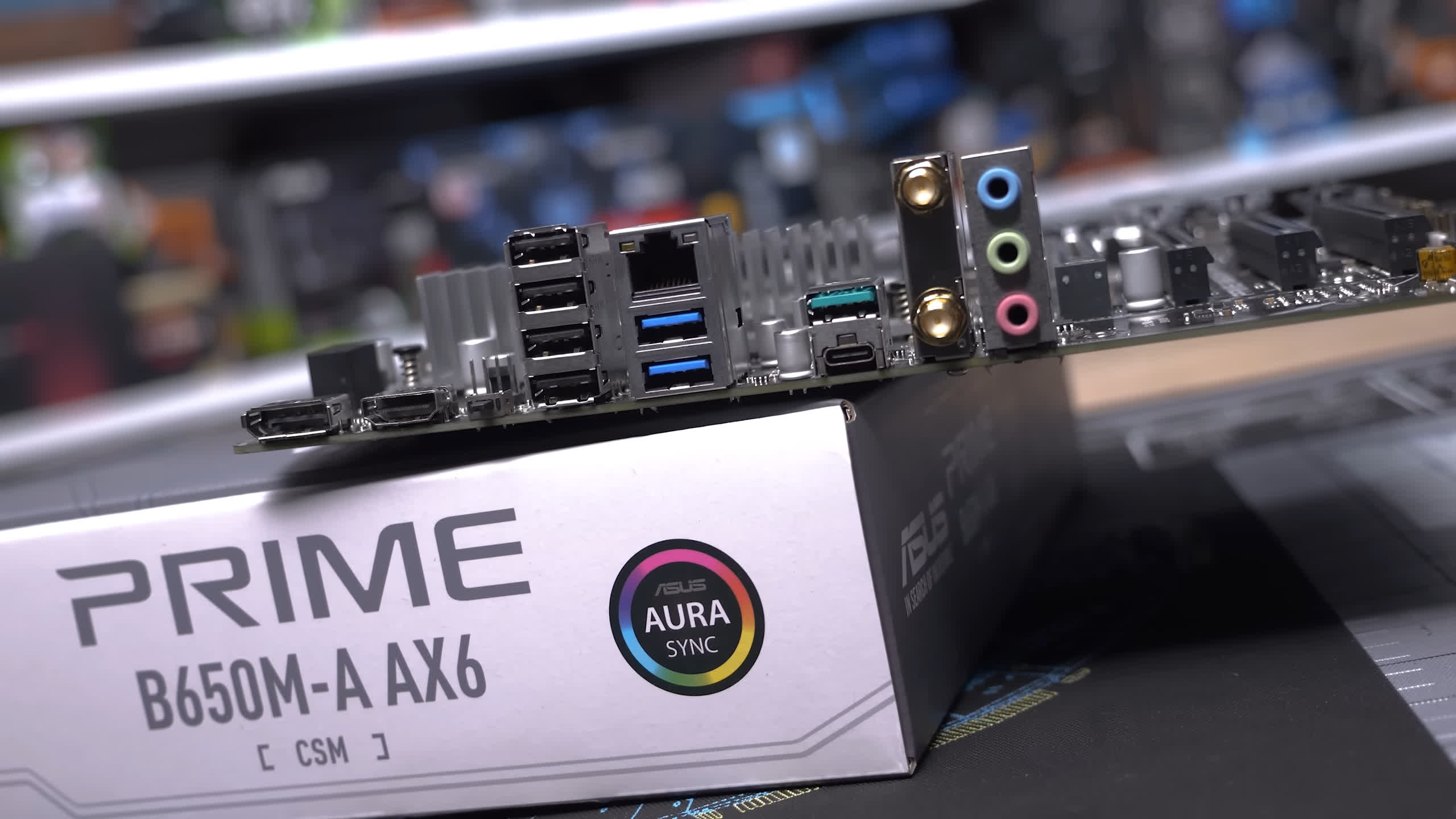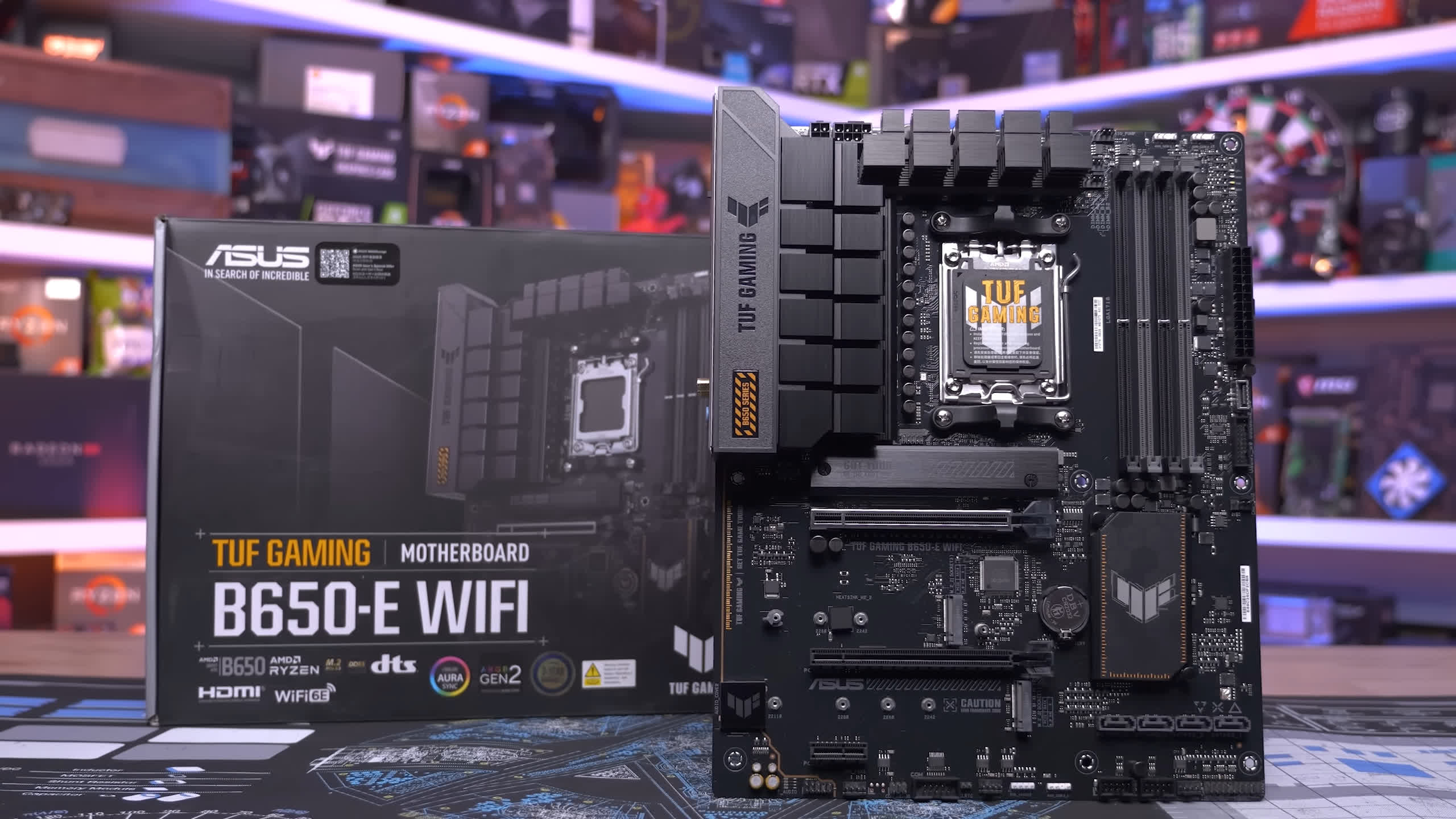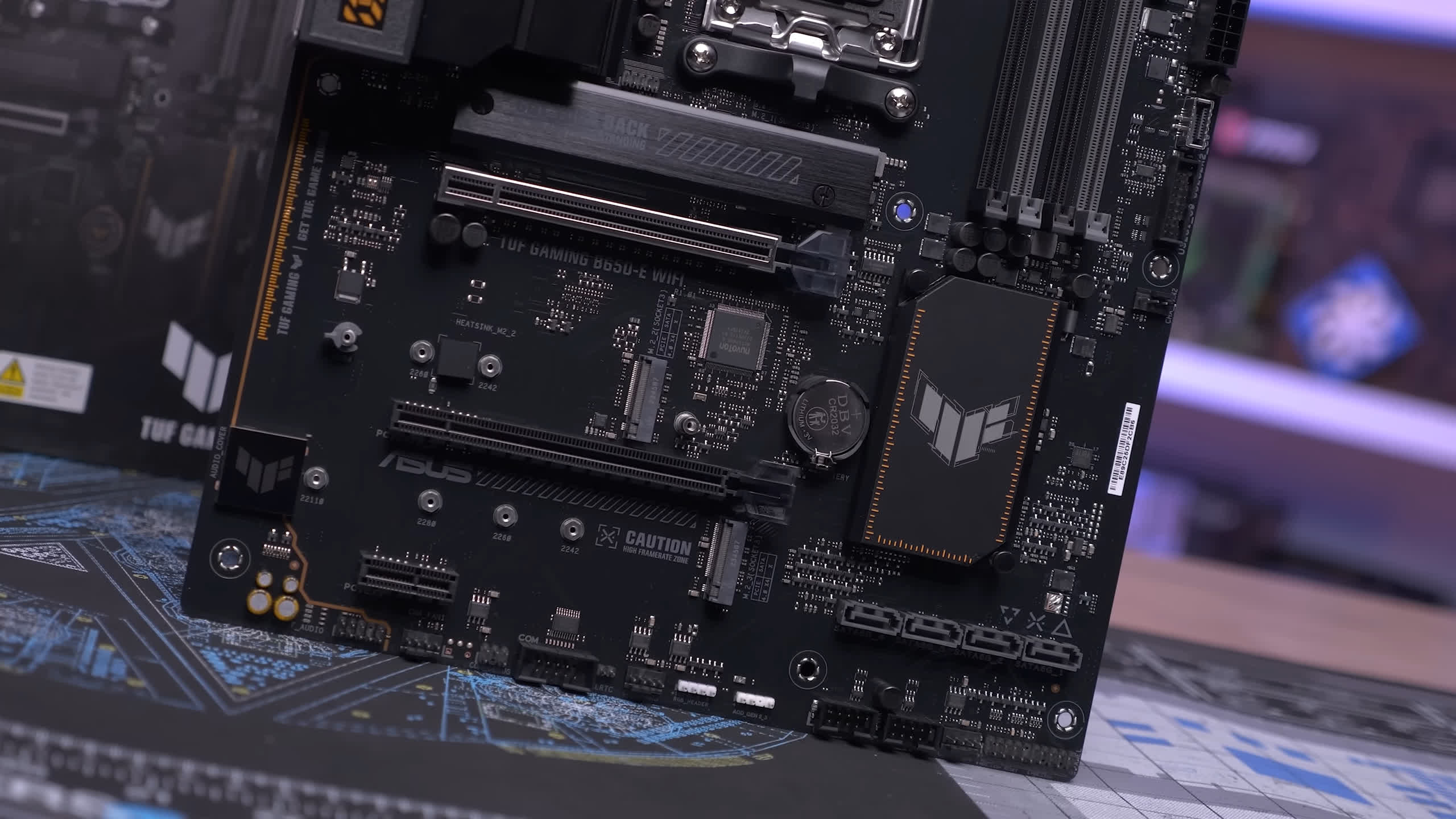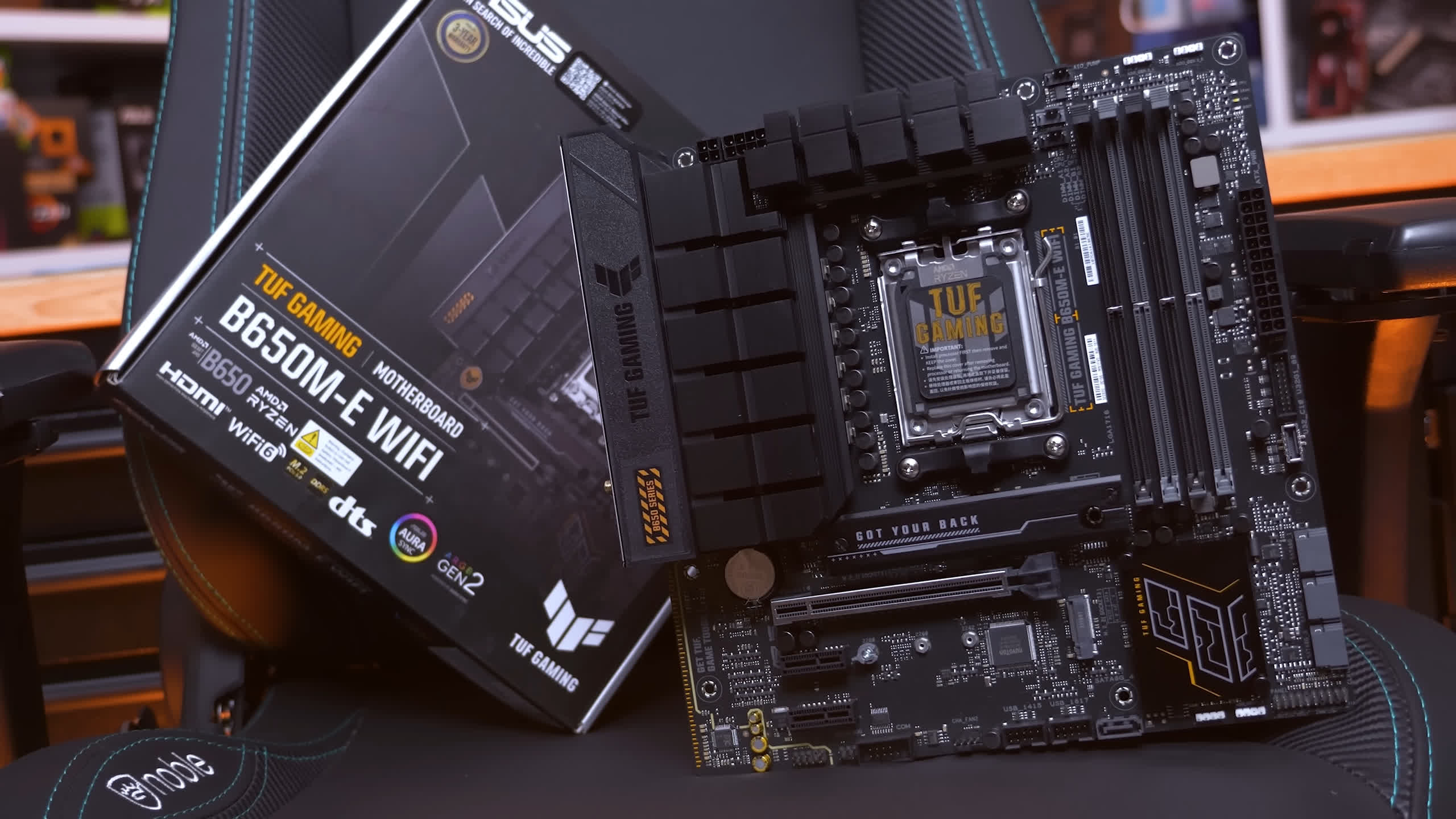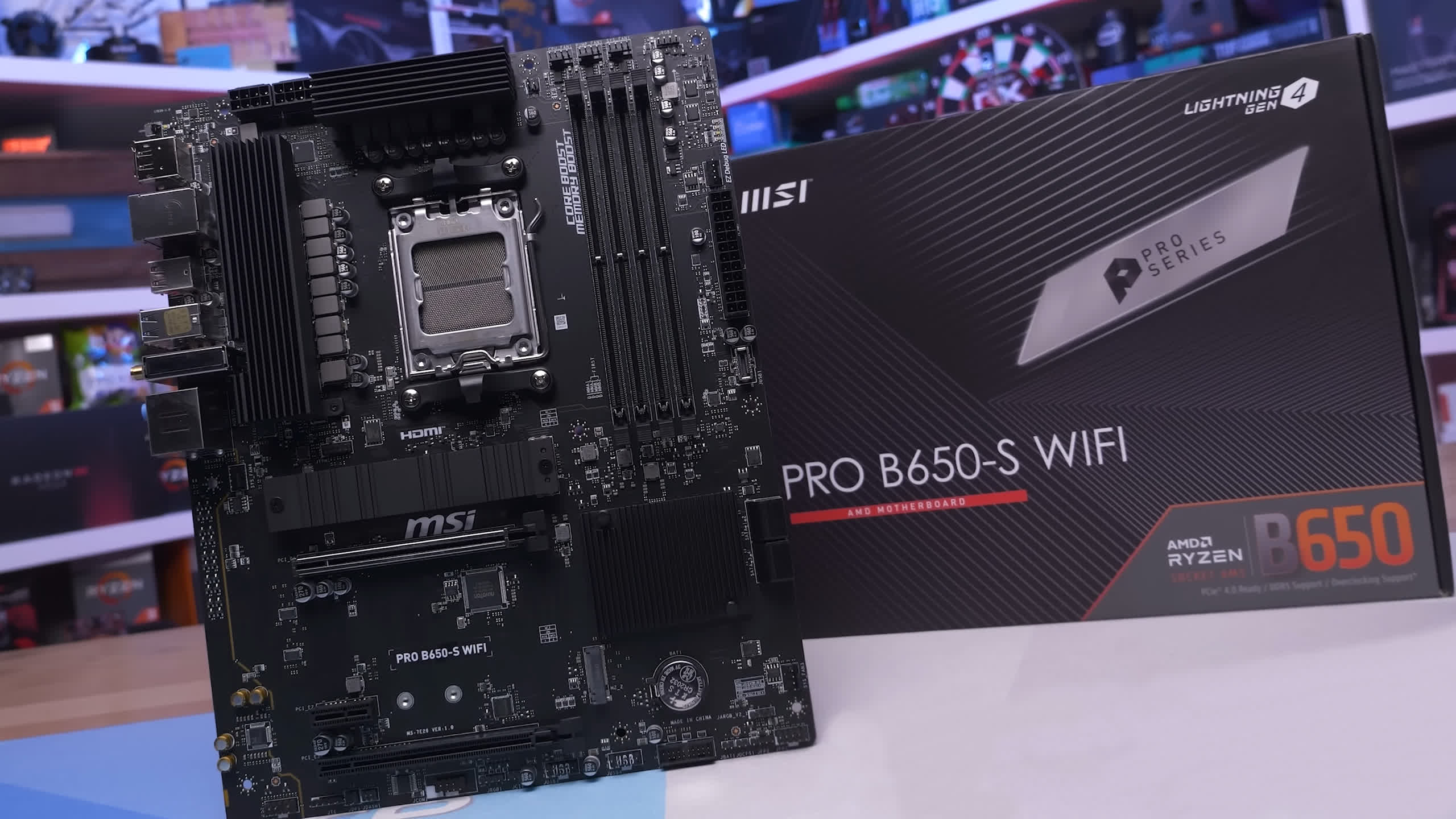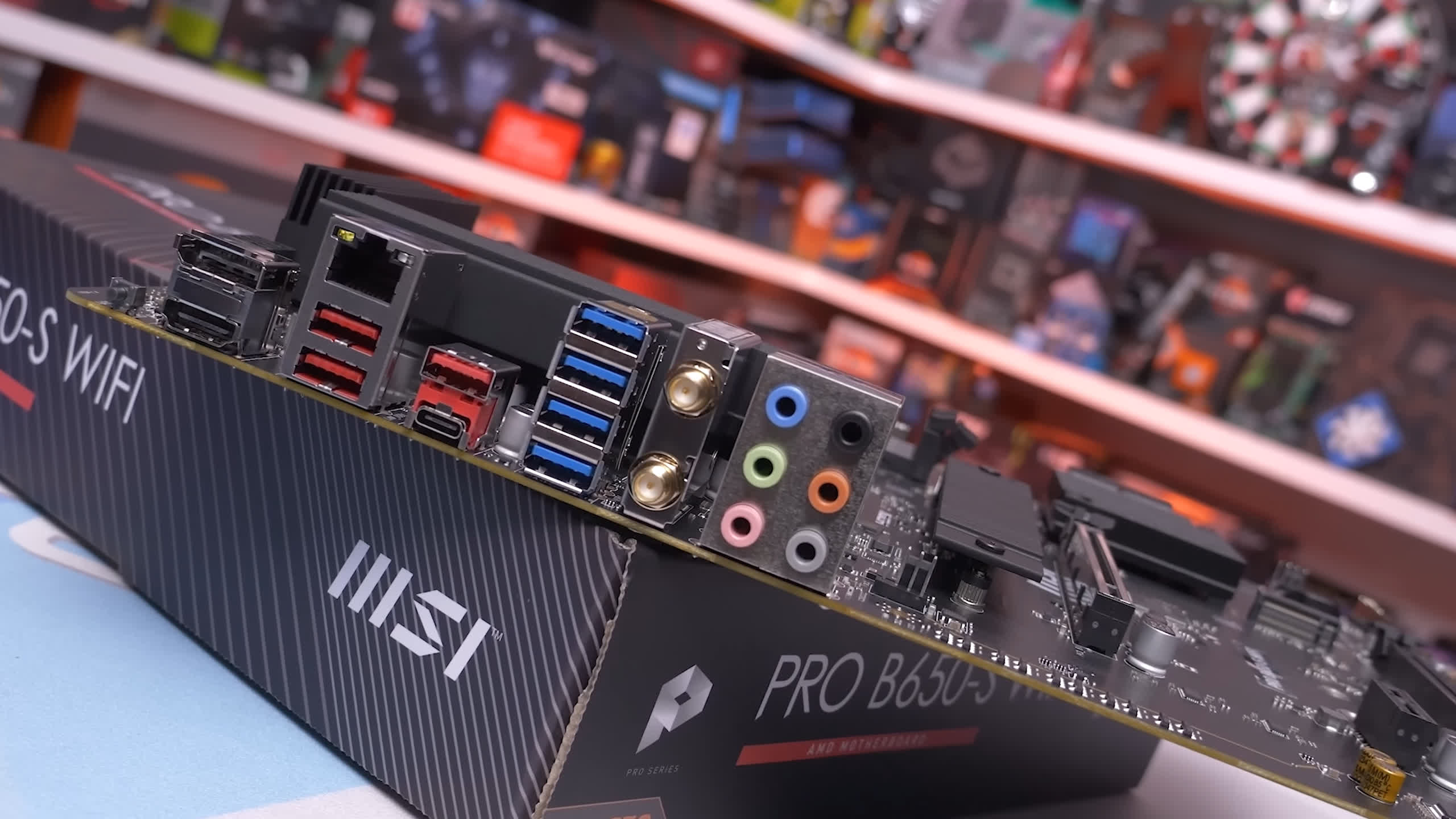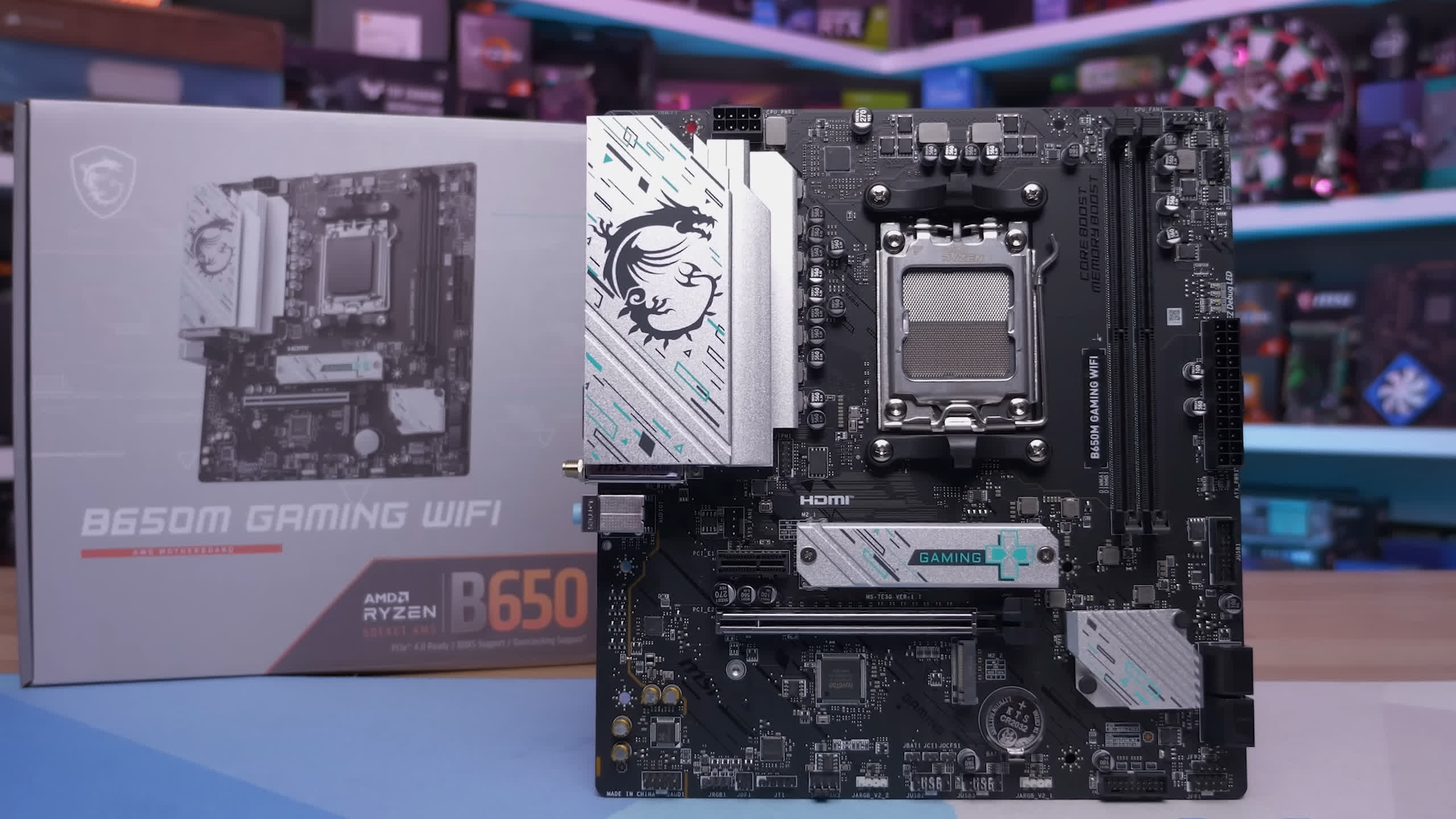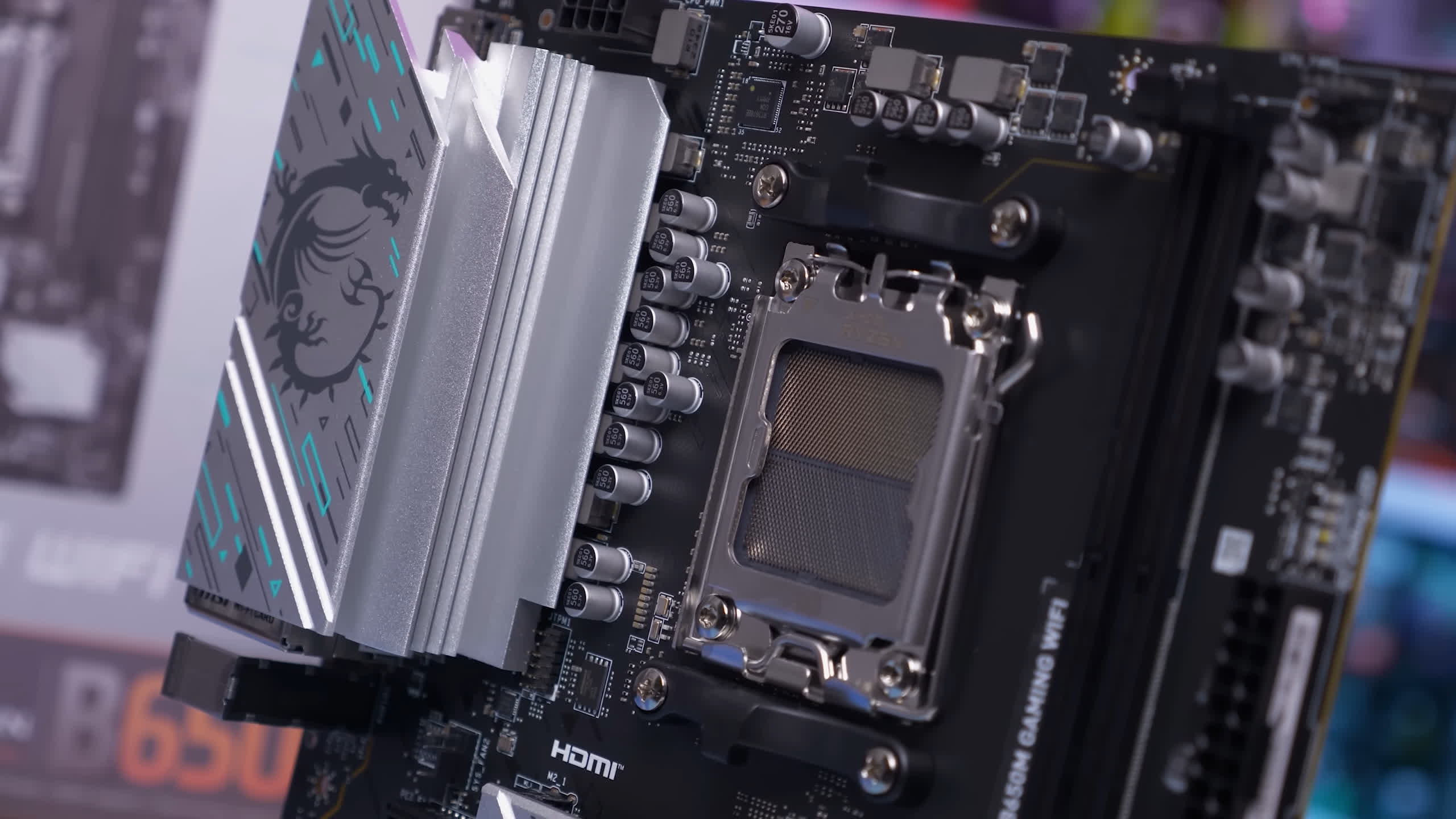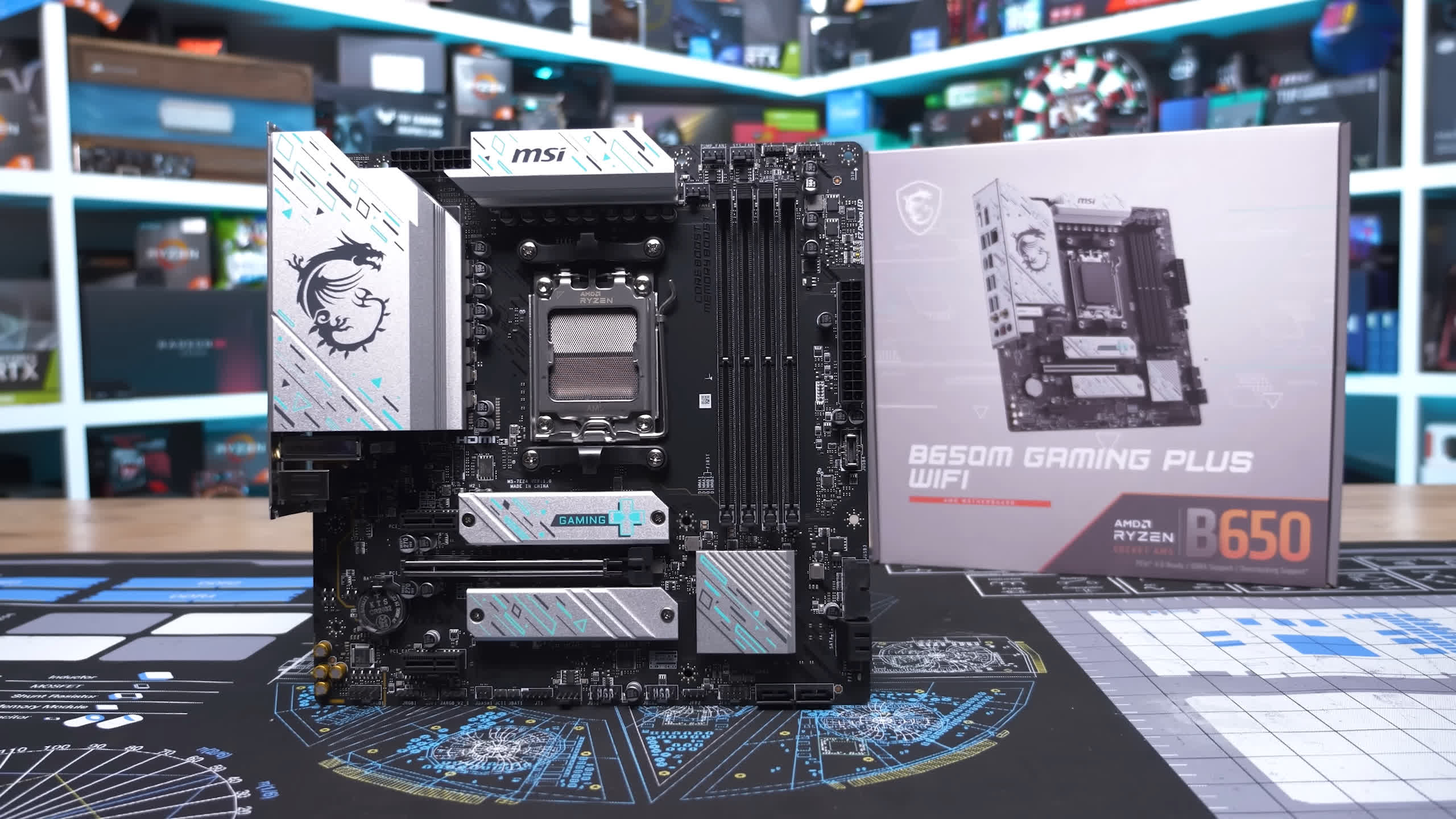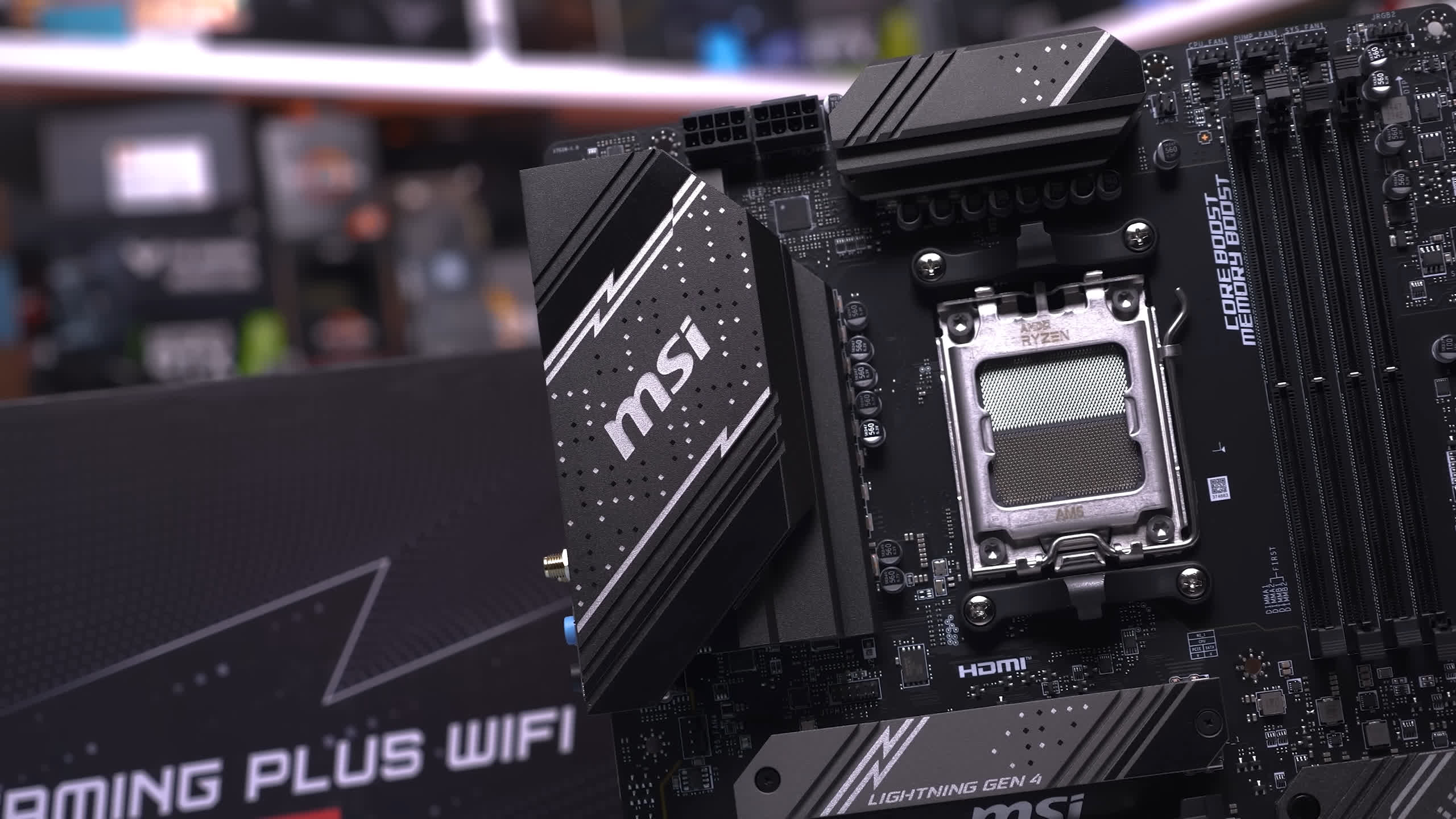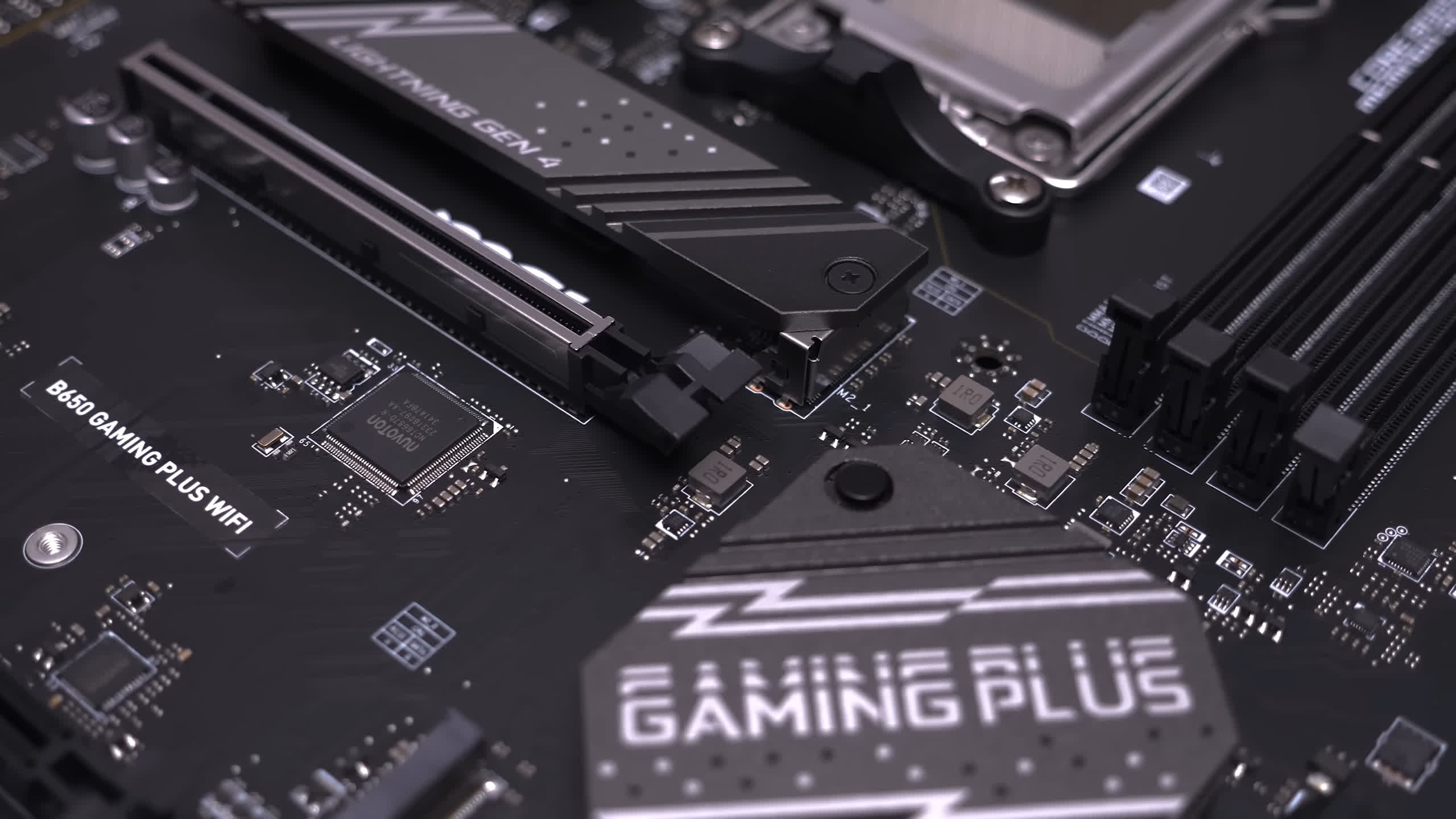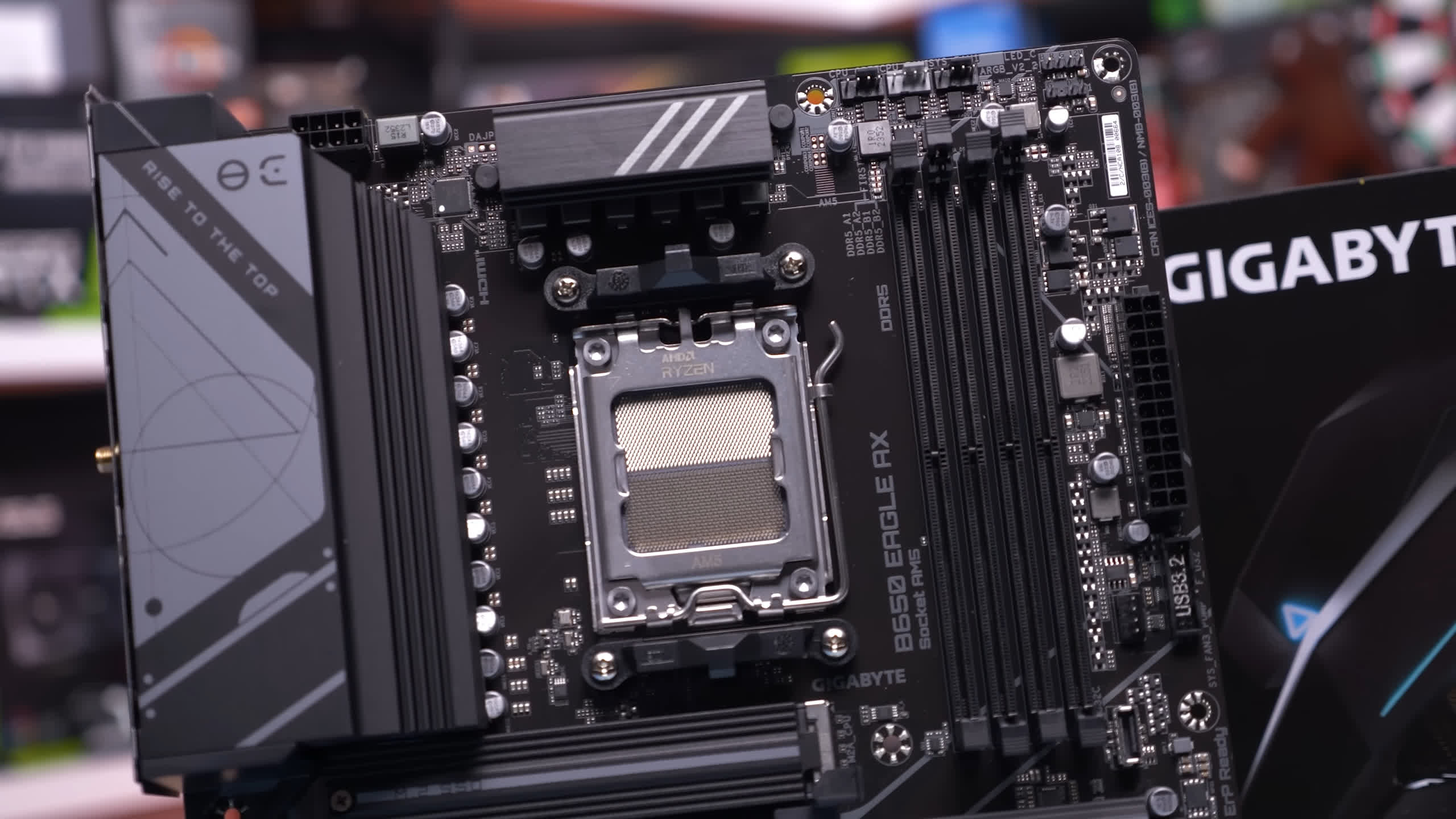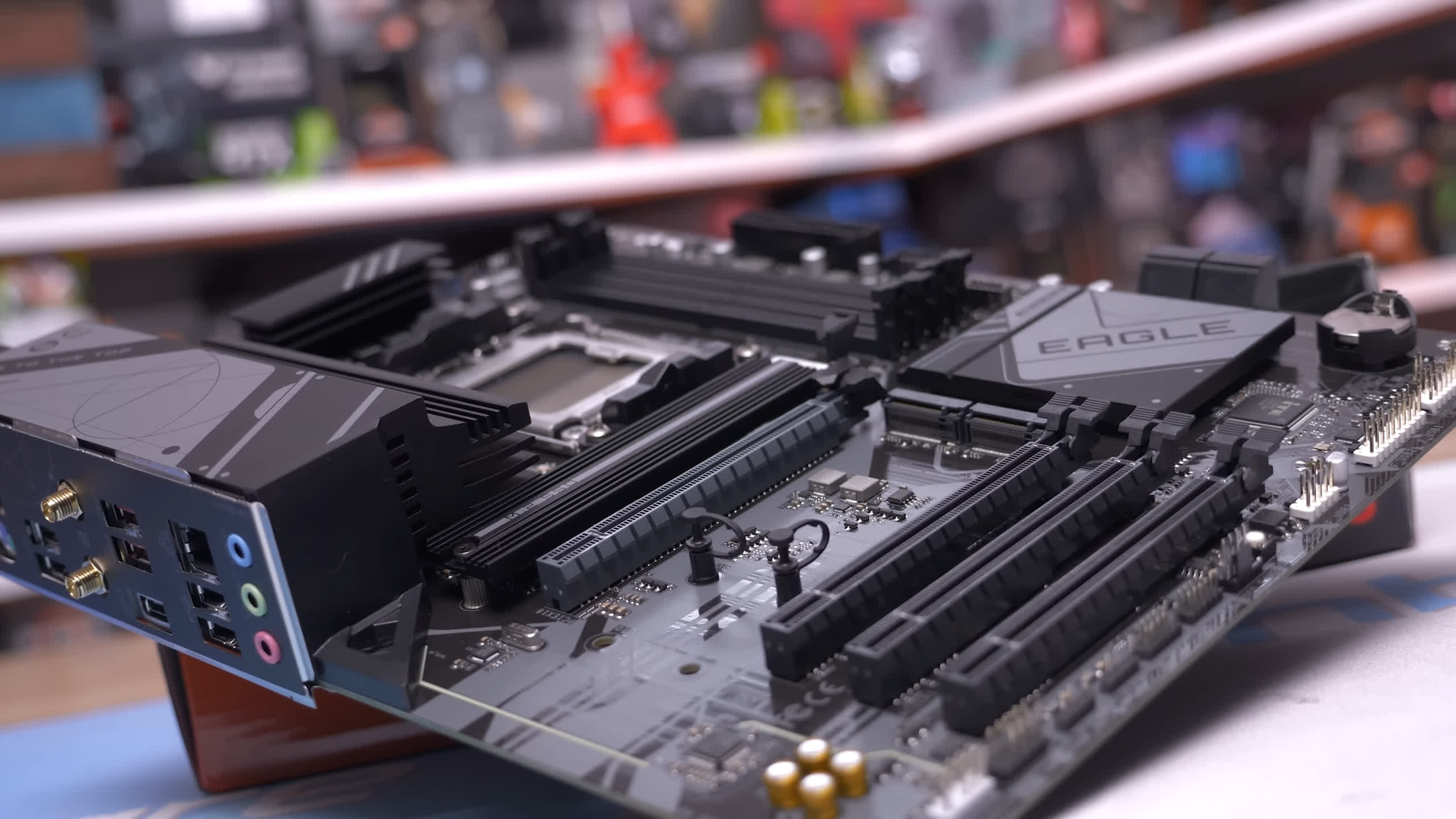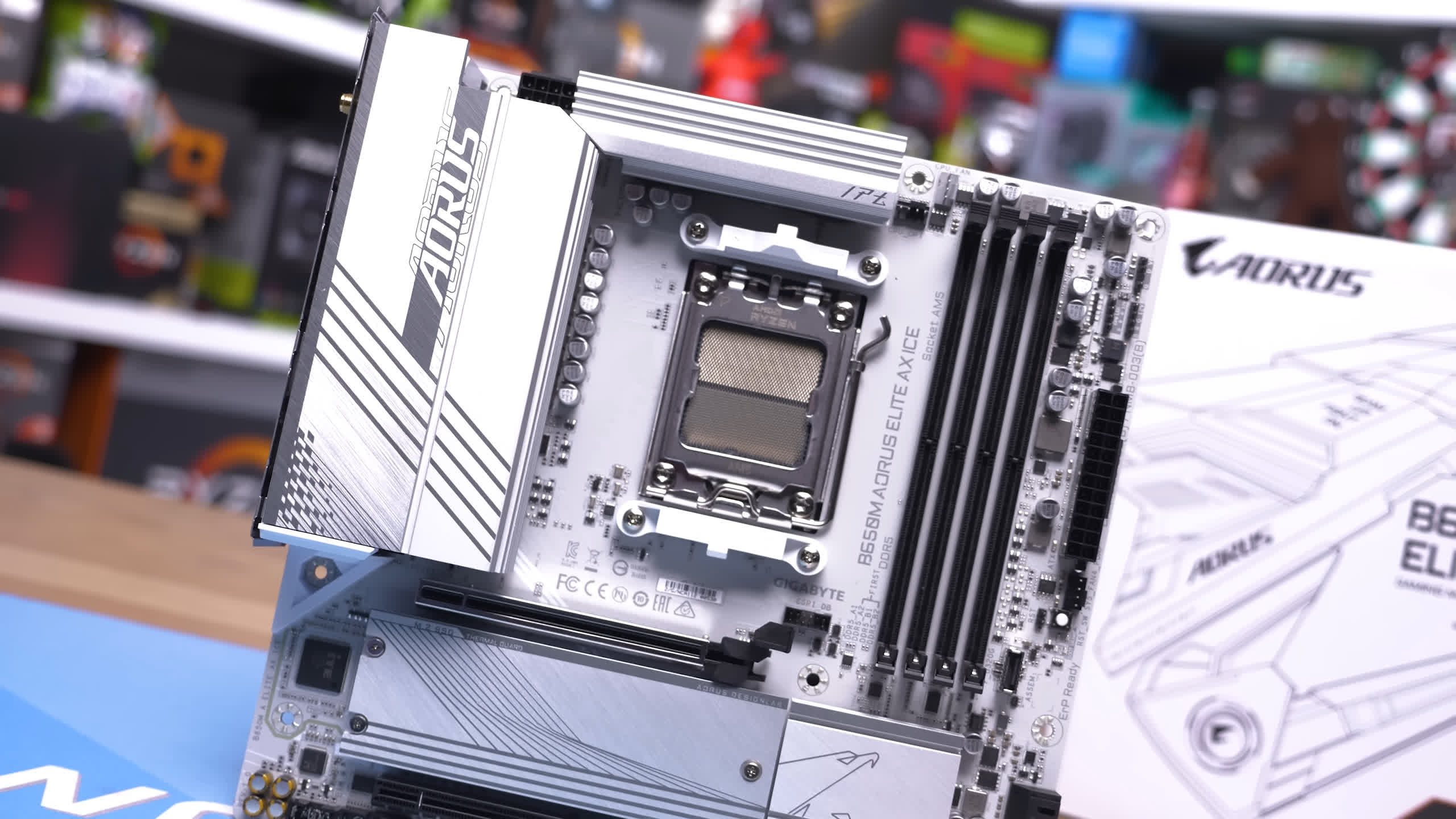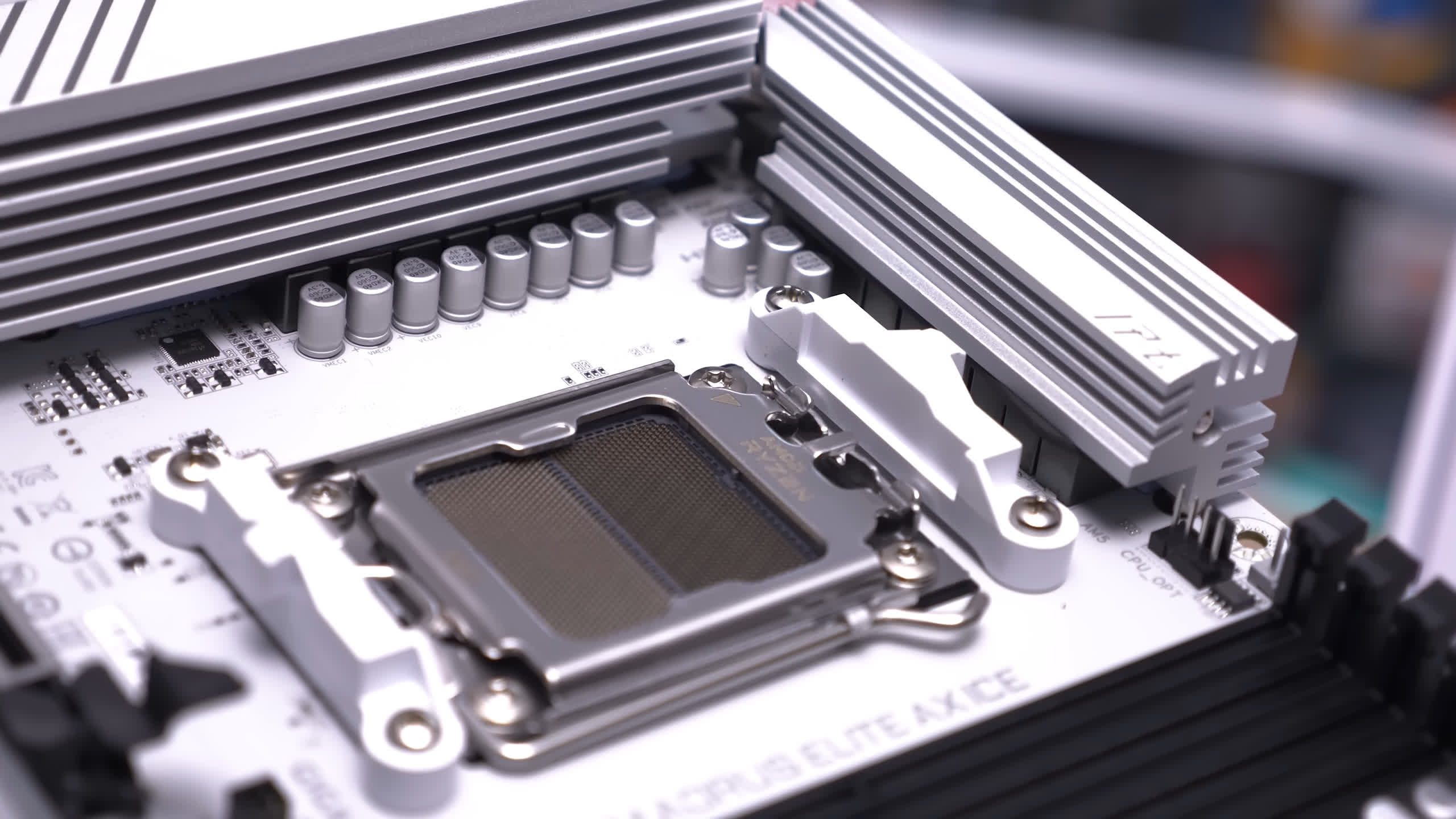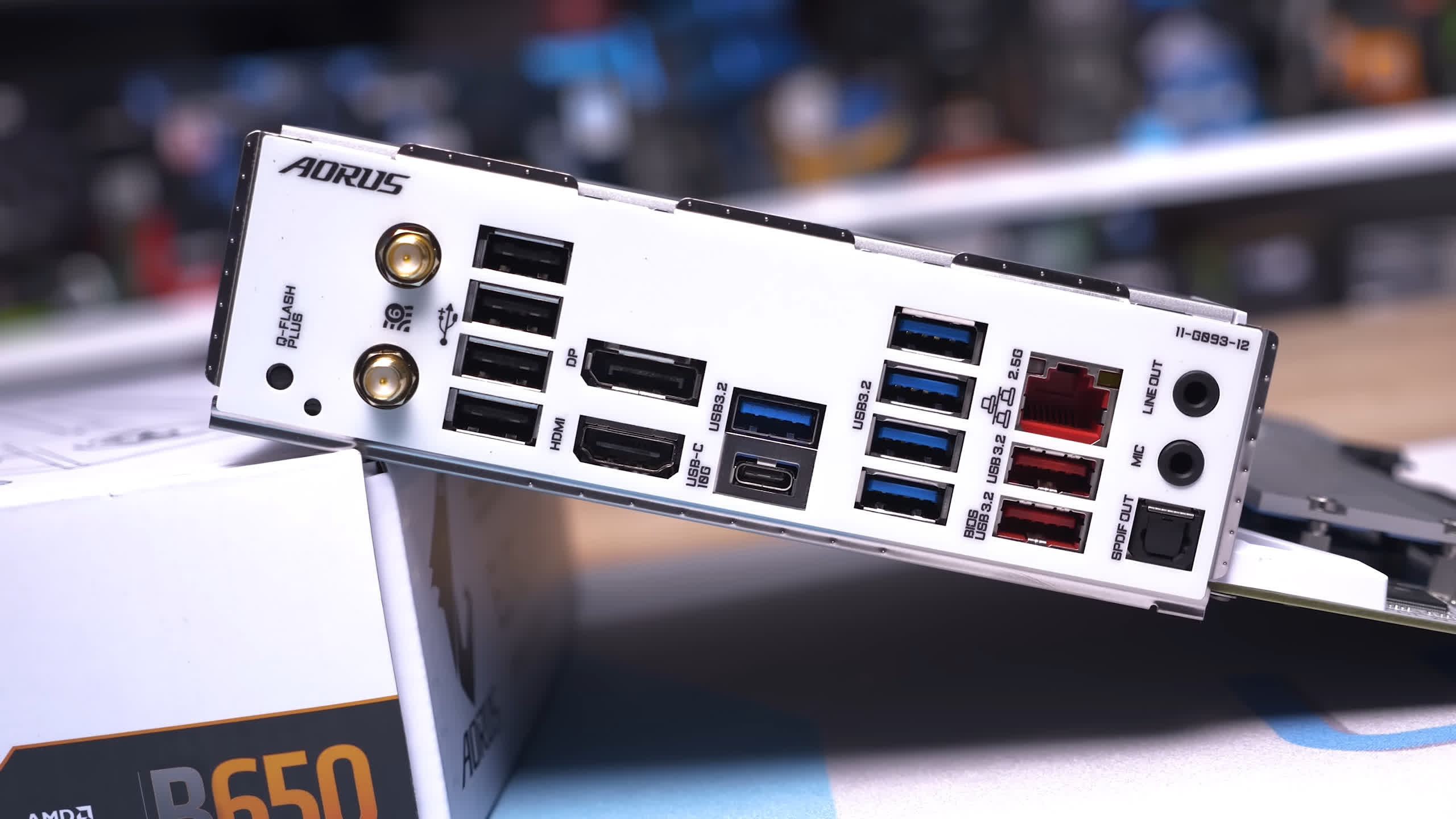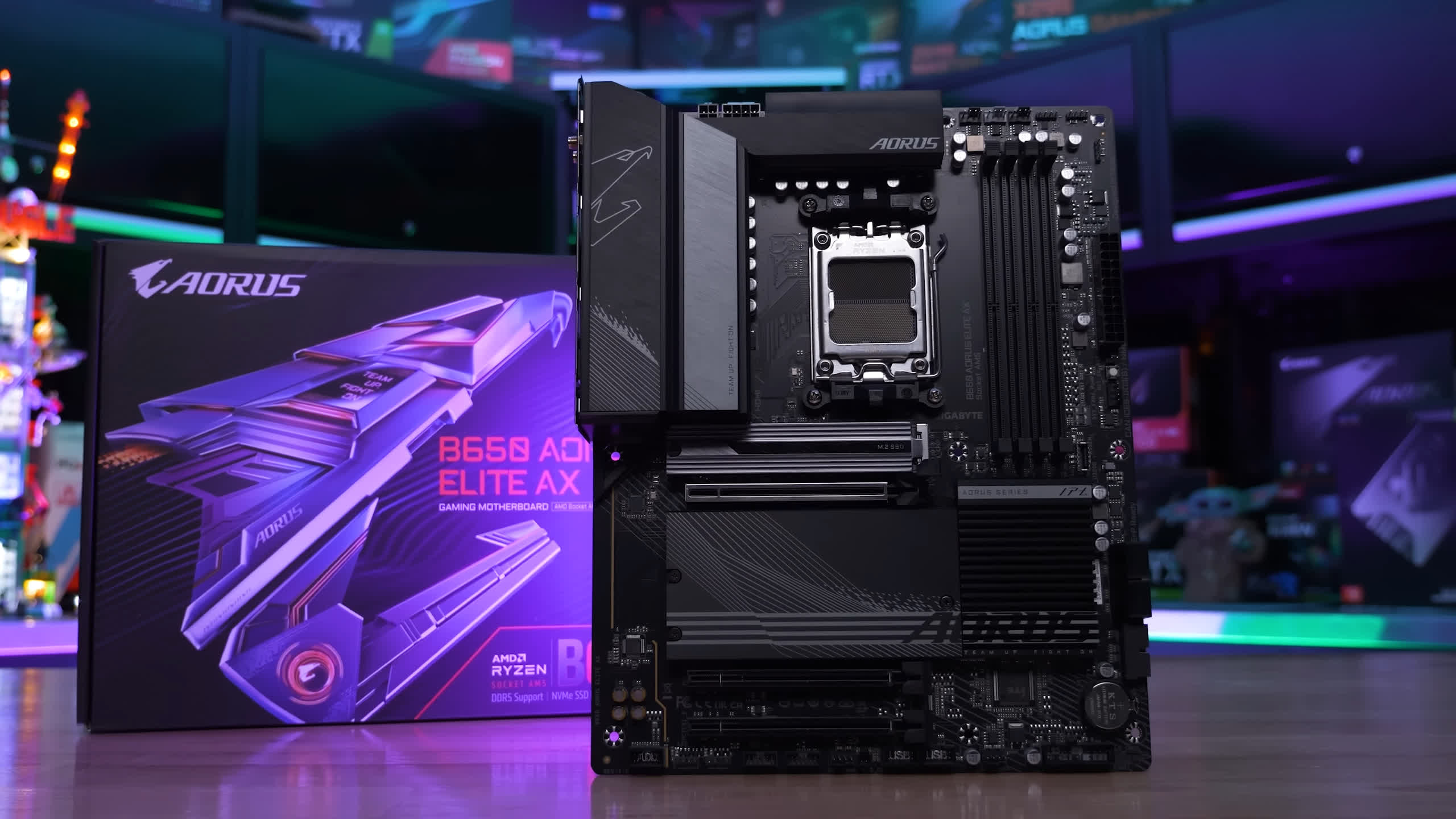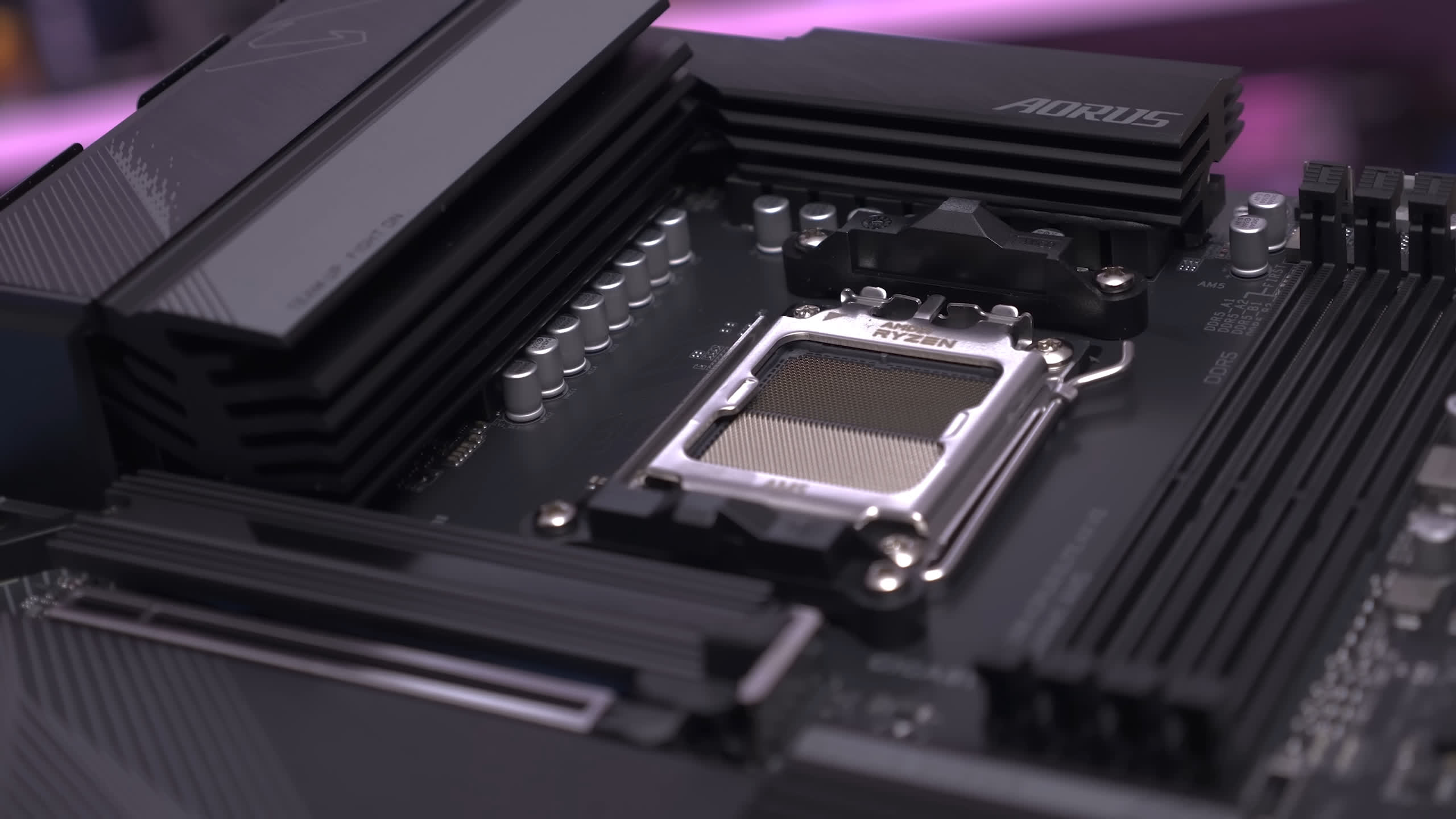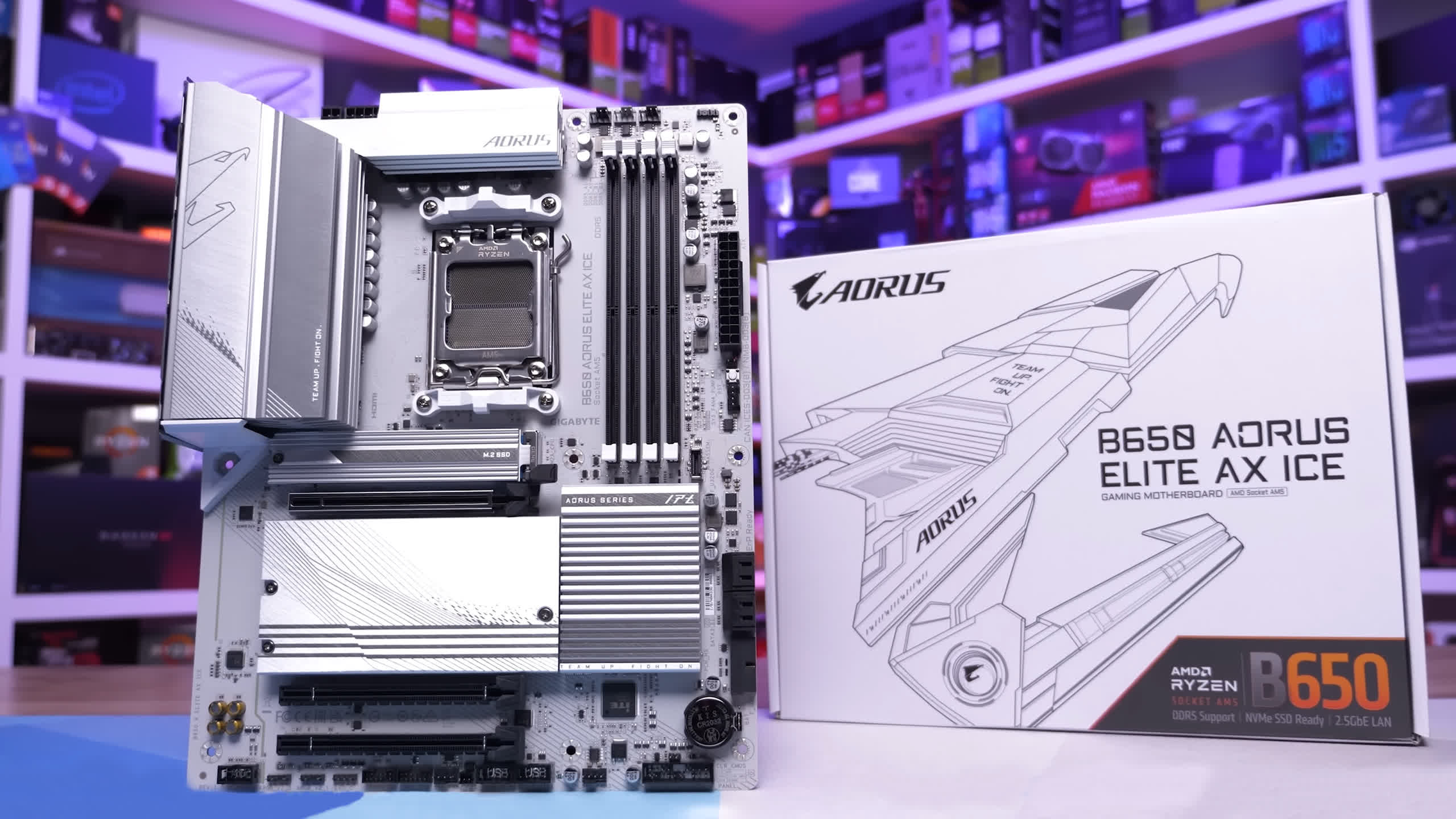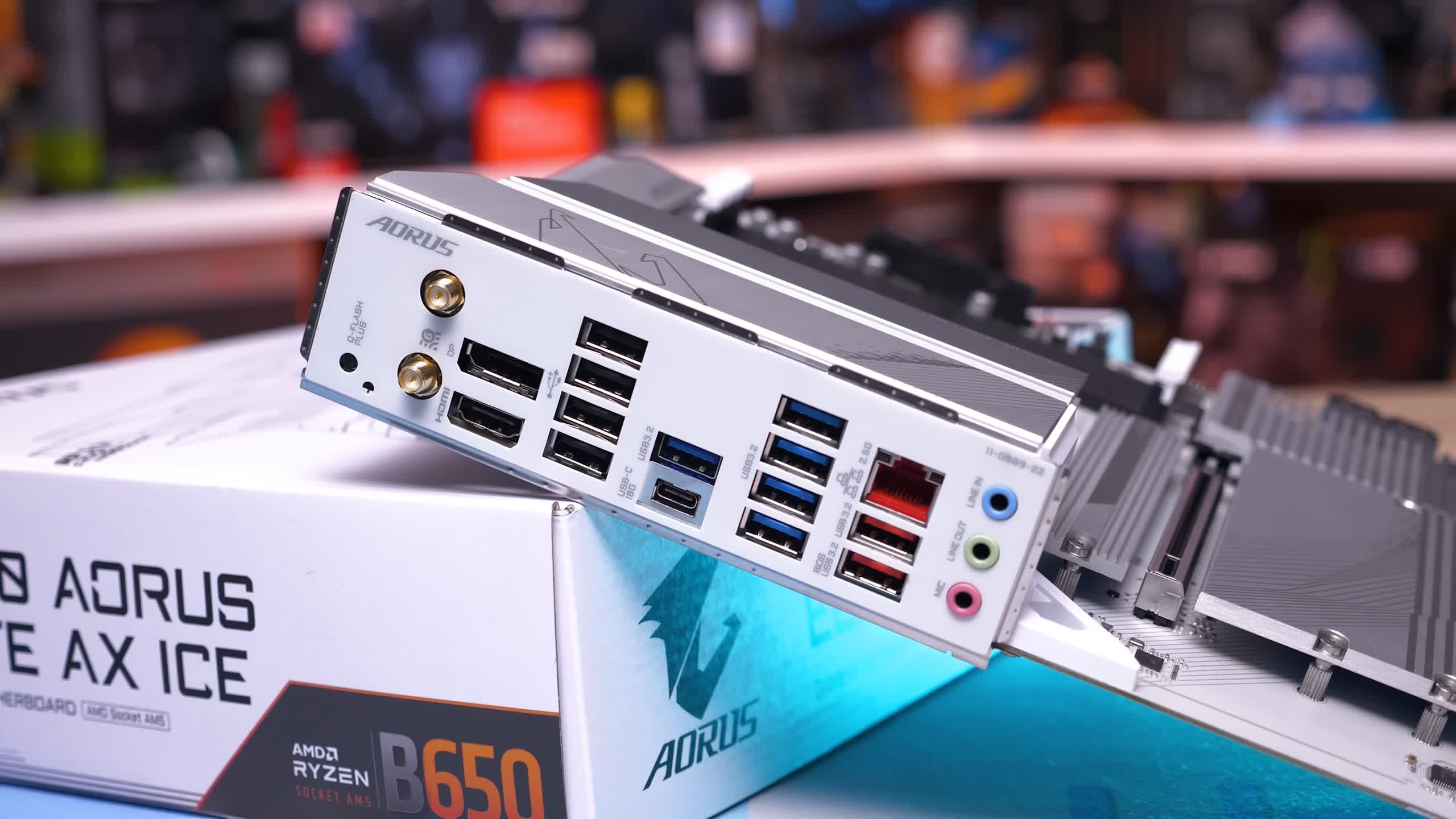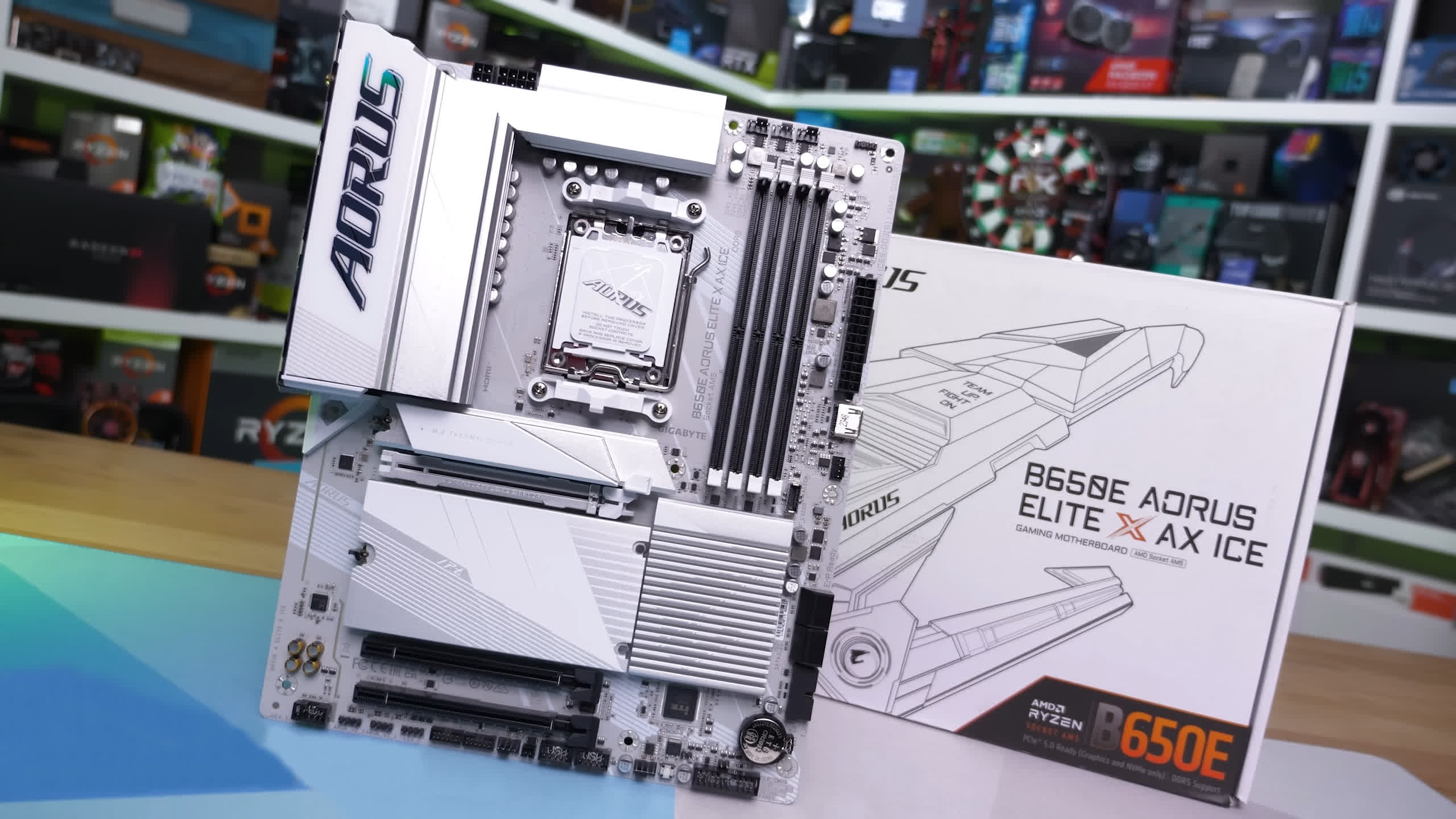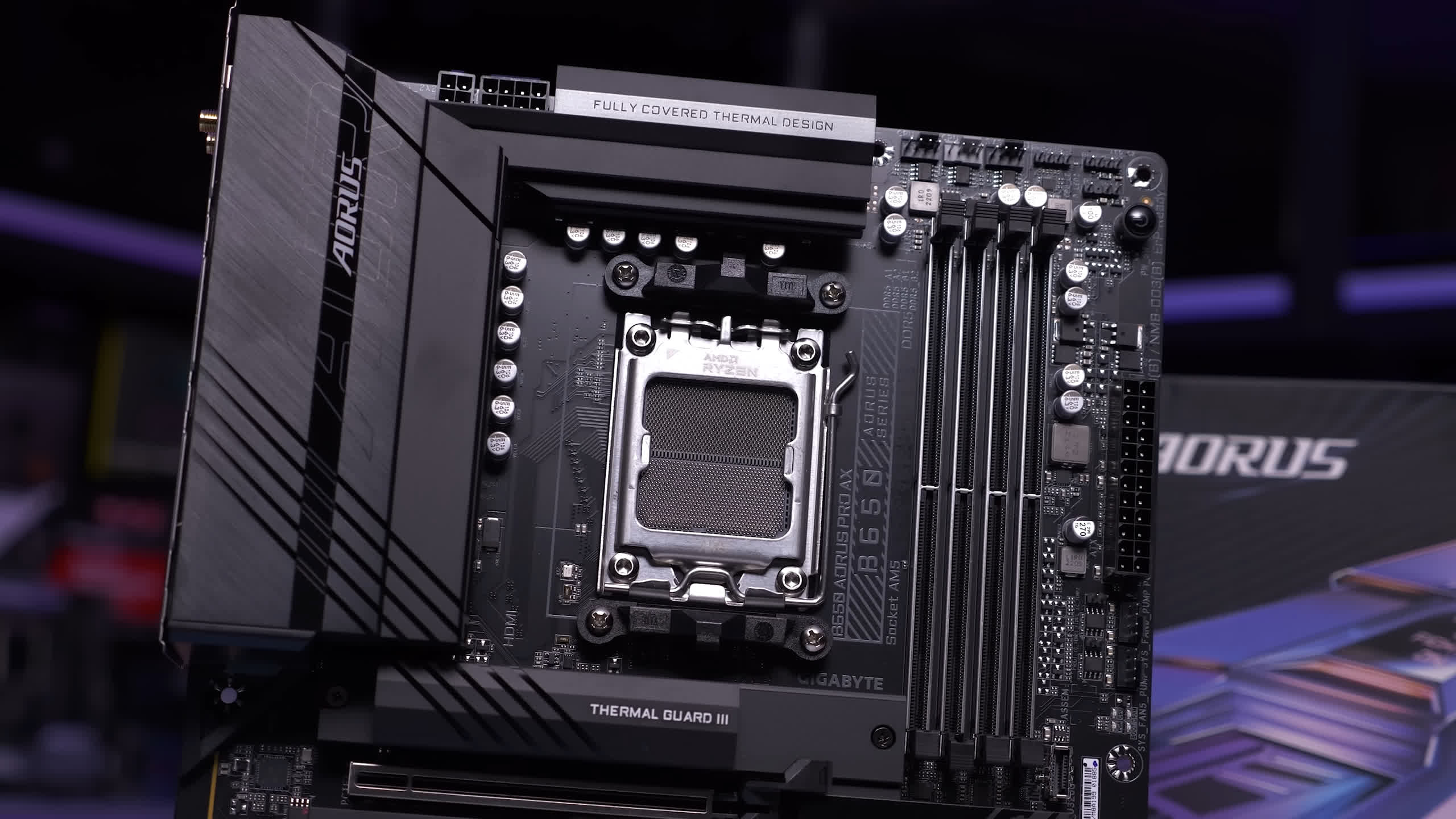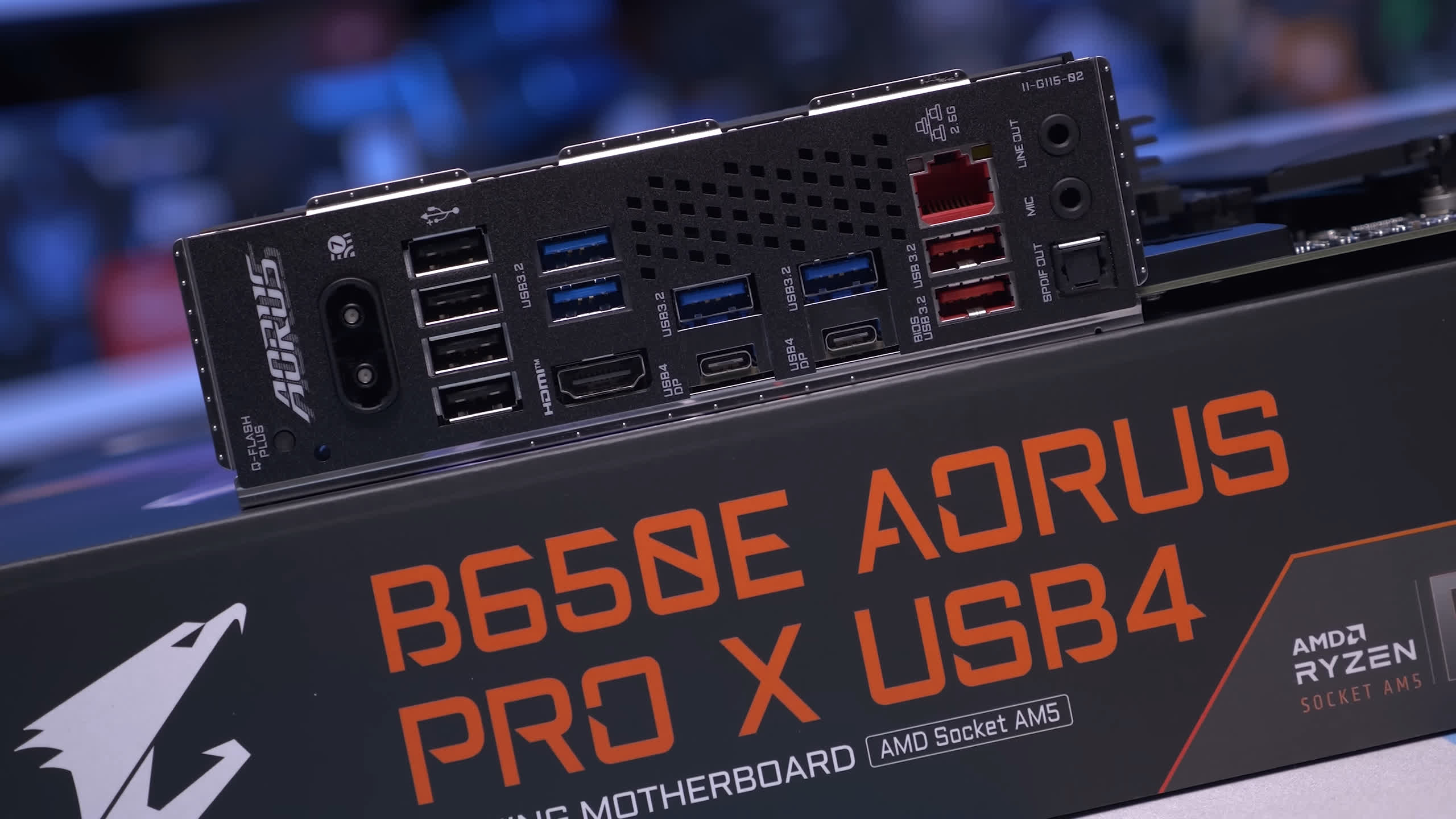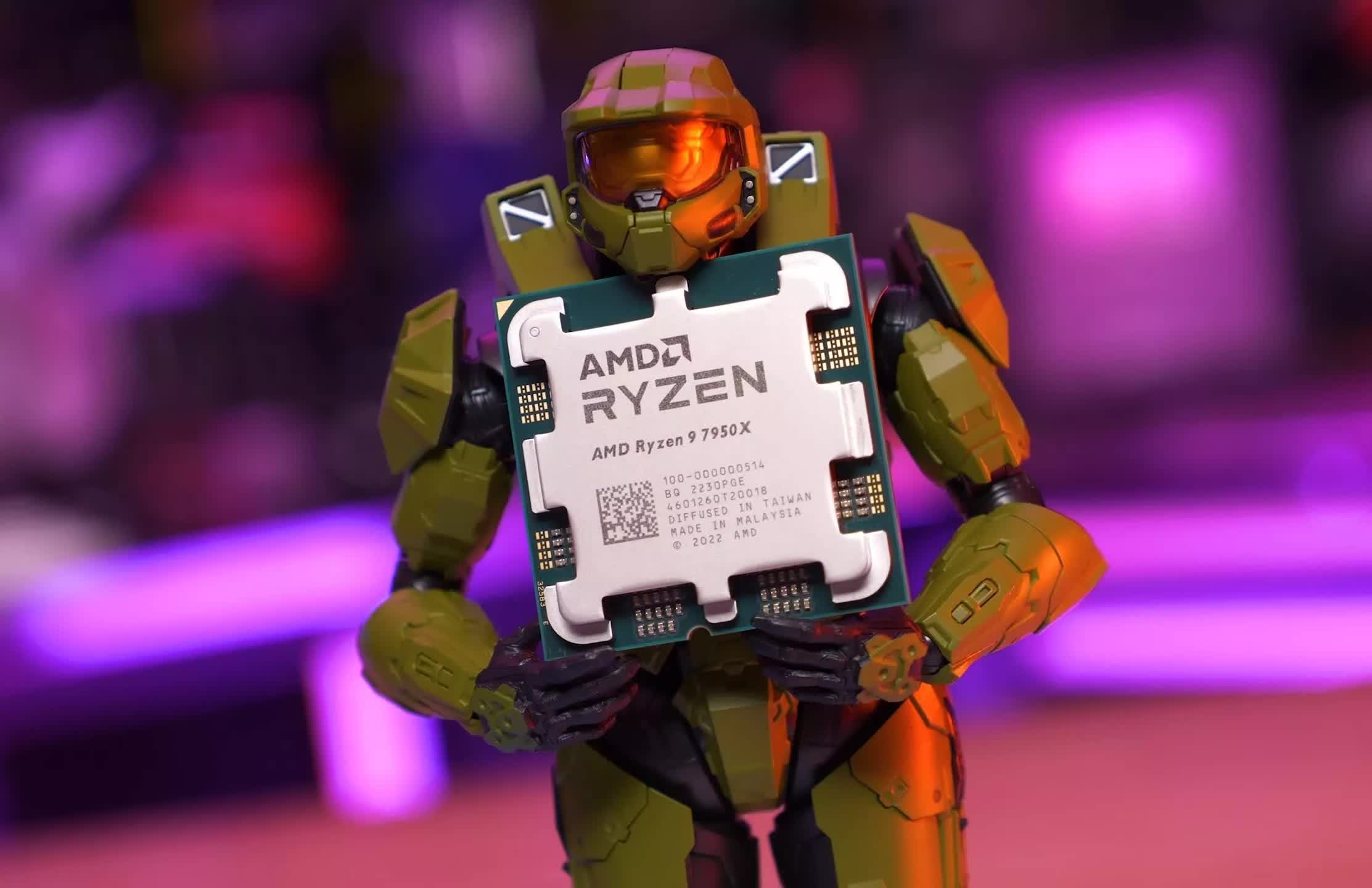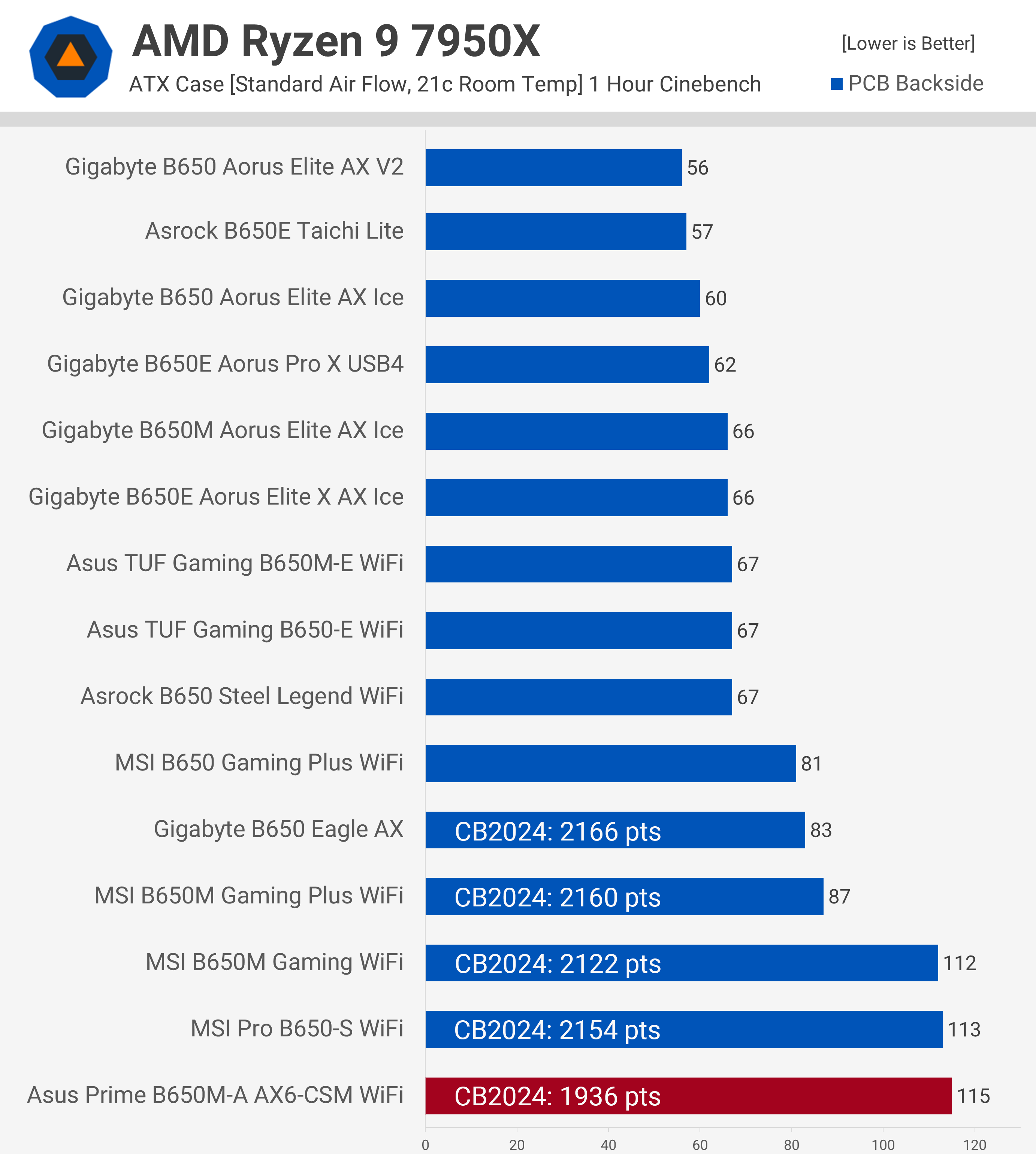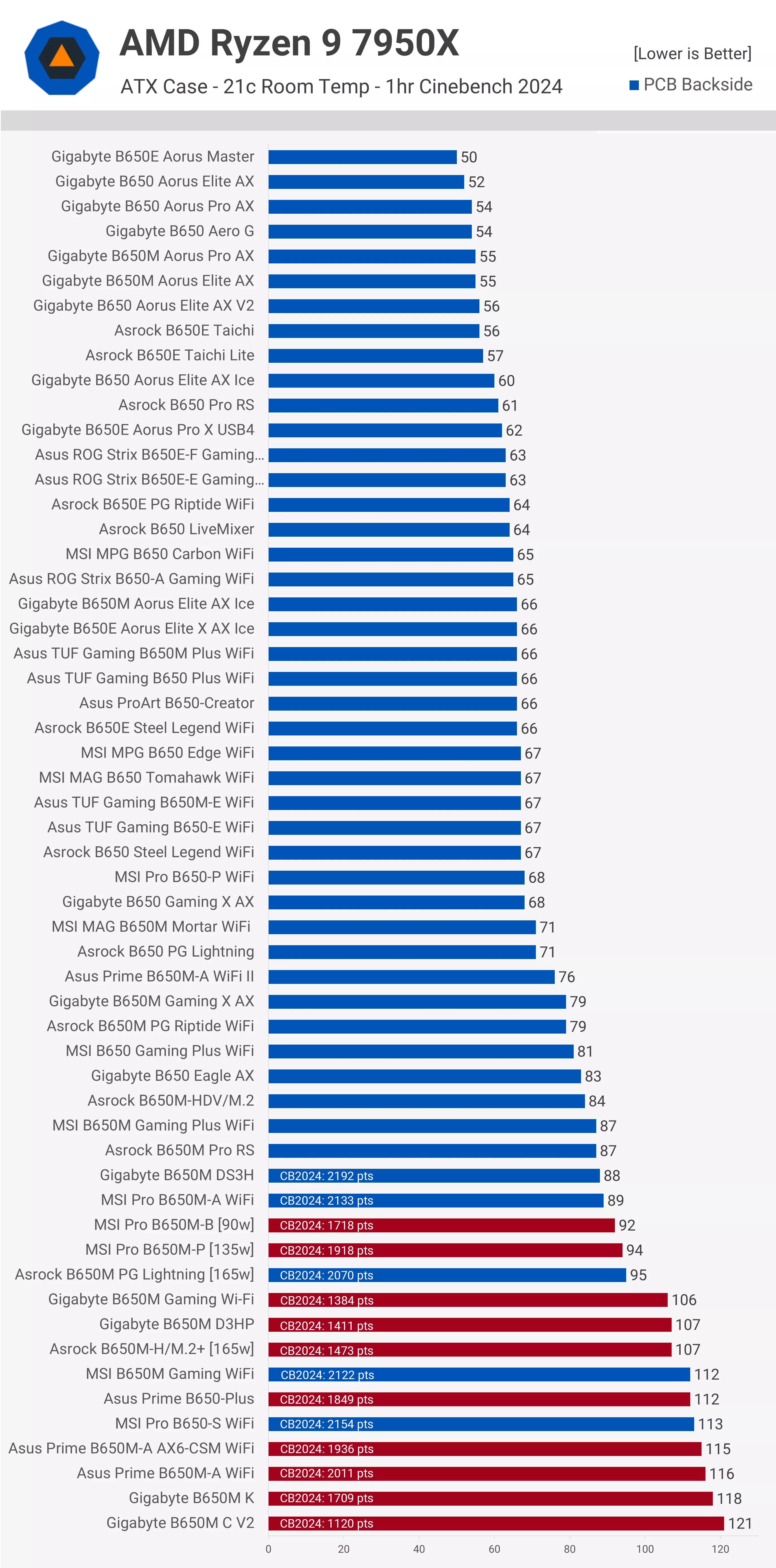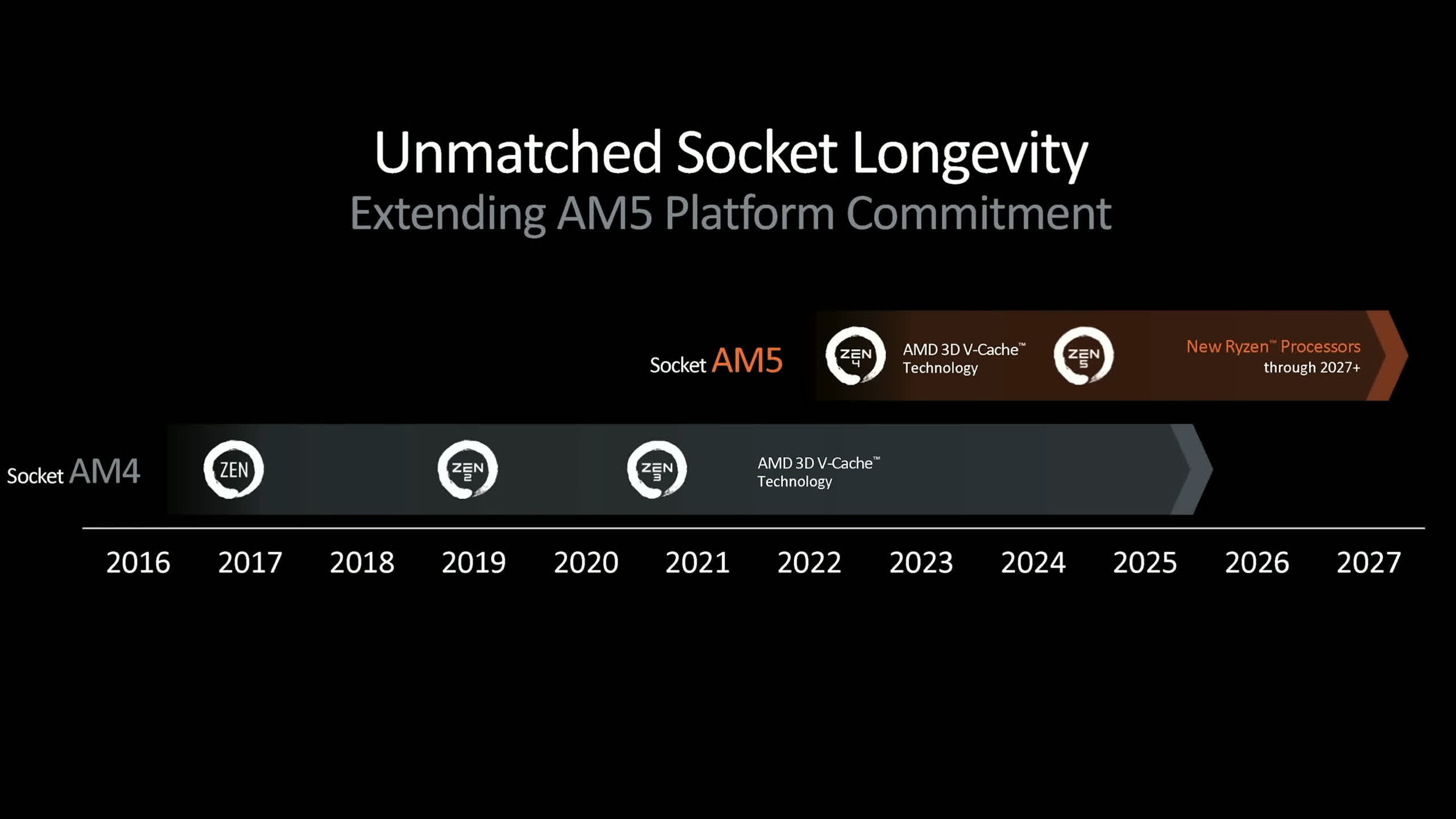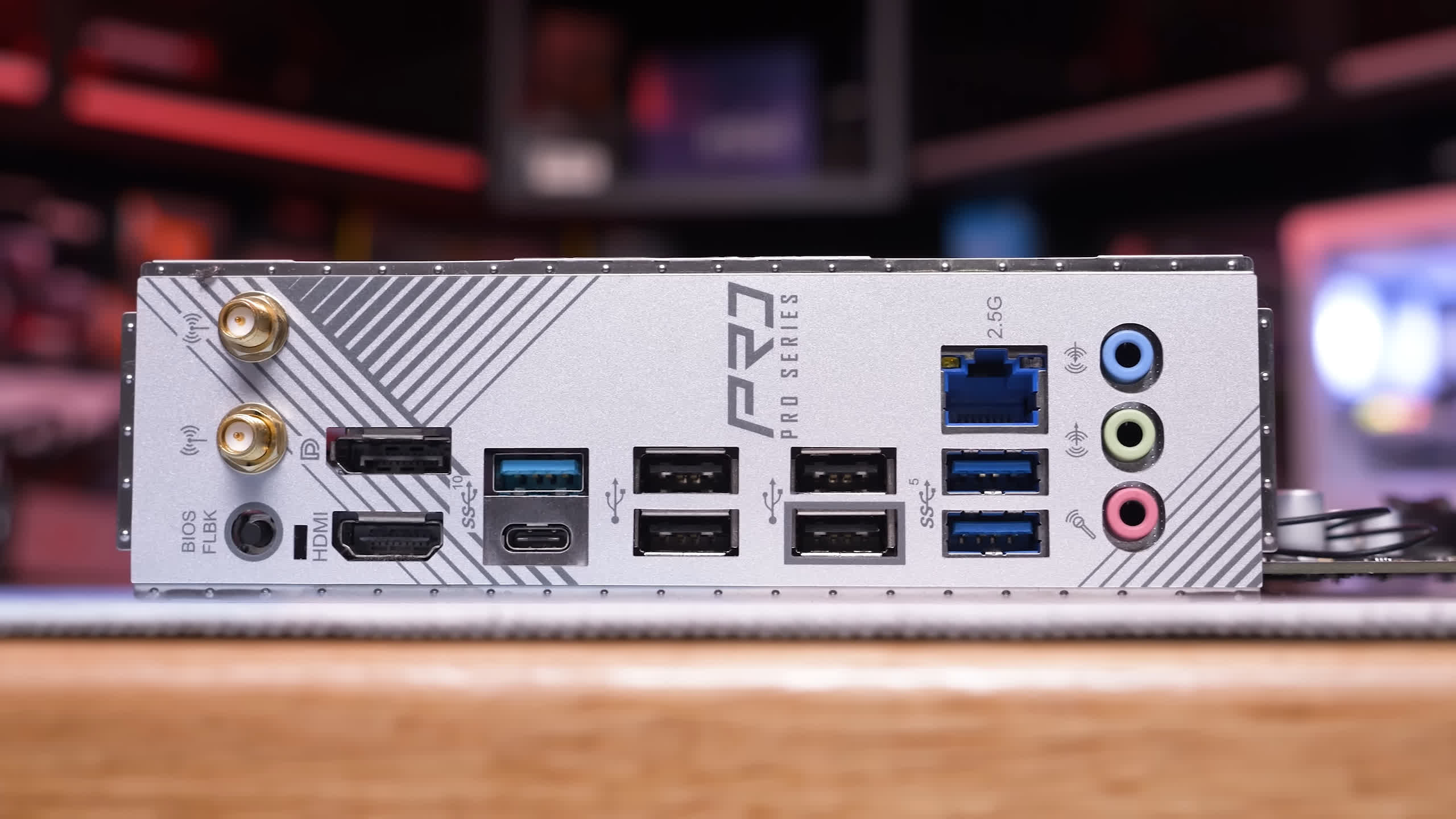I have to admit I'm somewhat of a B650 motherboard enthusiast, I think. That's sad, isn't it? Anyway, let's not focus on that too much and instead pretend that testing the VRM thermal performance of 56 motherboards, all using the same chipset, is a totally normal thing to do. And since it is totally normal, you'll want to know which AMD B650 boards are worth buying and which ones you should steer clear of.
Today, we're updating our B650 VRM thermal database with 15 new models that we hadn't previously reviewed. This means we've now tested a grand total of 56 motherboards, and all of that data will be featured in this review.
In case you want to check that out, for reference here's our original roundup of 35 AMD B650 motherboards, and a second test where we tested newer affordable B650 models.
Some of the new boards have been heavily requested, such as the Asrock B650 Steel Legend WiFi, the non-E version, the MSI Pro B650-S WiFi, and the Gigabyte B650 Eagle AX.
As usual, there's a lot to cover, so let's get into it…
Asrock B650 Steel Legend WiFi
Let's start by taking a look at the new Asrock B650 Steel Legend WiFi. While you might think we've already covered this board in our previous B650 content, that was the B650E model.
The new B650 non-E version looks fairly similar, though it is based on a cooler-looking white PCB. The VRM is still very powerful, moving from a 16 60A power stage vcore to a 14 80A power stage vcore, and you still get some nice big heatsinks.
In terms of pricing, it's just $20 cheaper than the B650E version. Oddly, this new non-E version seems to be a B650E board in disguise, offering PCIe 5.0 support for the primary PCIe x16 slot along with a PCIe 5.0 M.2 slot. In fact, compared to the B650E version, you're getting many of the same features. Some features have even been improved, such as the Realtek ALC4082 audio, an additional PCIe 4.0 x1 slot, and more USB options.
Features like the I/O shield are still pre-installed, there's heatsinks for all three M.2 slots, and the chipset gets a nice big heatsink as well. Overall, the B650 Steel Legend WiFi is a great-looking motherboard and should be a serious contender in the sub-$200 price range.
Asrock B650E Taichi Lite
The Asrock B650E Taichi Lite is, in our opinion, one of the most exciting B650 boards, and we're still having a hard time believing you can buy it for $240. This is because it is essentially the original B650E Taichi motherboard, which currently costs $370, so $130 more, which is over a 50% premium.
This is surprising because the 'Lite' is essentially the same board but without the RGB effects and fancy heatsinks.
The board still packs ample cooling, and there are some RGB effects, but honestly, who cares? For $130 off, they can keep the RGB effects. This is a seriously good board for the money. There are 24 105A power stages powering the vcore, so that's a rather impressive VRM. There's a multitude of USB ports, PCIe 5.0 expansion and M.2 slots, good quality audio, and basically everything you could possibly need.
The I/O panel comes with a pre-installed shield and a dozen USB ports, including a USB 4 Type-C. So this is an incredibly well-equipped board and probably the best-featured board below $300.
Asus Prime B650M-A AX6-CSM WiFi
Now, it's time for some new Asus boards. We're not exactly sure when the Prime B650M-A AX6-CSM WiFi was released, but the last time we looked around, which was a few months ago, we didn't come across it. We requested a review sample from Asus, but they told us they didn't have access to a sample for this particular model. They just couldn't do it, too exclusive, it seems.
The truth is, it's a heap of junk. Without a doubt, it's one of the worst B650 motherboards we've come across. Spoiler alert: do not buy this motherboard. The board uses XSemi discrete MOSFETs of the XP4064C and XP4062C variety, creating a very weak 4-phase vcore. There's also barely any cooling to speak of, just a small silver heatsink over the vcore MOSFETs.
It's not currently on sale in the US, but you can buy it in Australia, and most have it priced around $270 AUD, but there are now listings as low as $240 AUD. That's still really expensive. The equally terrible Asus Prime B650M-A WiFi II, for example, costs $180 AUD, while a decent board such as the MSI Pro B650M-A WiFi can be had for $200 AUD.
Price aside, this was the worst B650 board we've come across in terms of reliability. Getting the board to POST was a challenge, and it was unable to run stably using our G.Skill Trident Z5 Neo DDR5-6000 CL30 memory. When it did POST, our stress test would crash after a few minutes, forcing us to test this board without EXPO loaded.
Feature-wise, it's nothing special either. You get four expansion slots, which is nice, though you'll probably only be able to use a few of them as they're all crammed together on this mATX board. There is a PCIe 5.0 M.2 slot, two more 4.0 slots, a reasonable amount of USB ports, Wi-Fi 6, though you're only getting Gigabit LAN. All in all, it's not a good motherboard, so let's move on to see what else Asus has for us.
Asus TUF Gaming B650-E WiFi
The B650 TUF Gaming models were impressive in our previous testing, and now we have new 'E' versions, whereas the previous models were designated as 'Plus.' For this standard ATX model, we're saving $20 compared to the 'TUF Gaming B650-Plus WiFi,' so that lands this board at $180.
This discount sees the vcore VRM cut down from a dozen 60A power stages to eight, though the PCIe slot, M.2, and SATA configuration remain the same, and there's the same total number of USB ports. Networking has been changed; you're now getting WiFi 6E rather than just WiFi 6, but the 2.5 Gbit LAN has been downgraded to Gigabit, which is a bit disappointing.
The cutdown 'E' model also misses out on the M.2 heatsink for the 2nd and 3rd slots, the SATA ports are less conveniently placed, there's one less PCIe x1 slot, there's just a single USB Type-C on the I/O panel rather than two, and the integrated audio has been downgraded.
In our opinion, a 10% discount isn't much for what you're giving up here, but it will depend on what features you prioritize. The good news is the VRM should still work well, so overall, it's not a bad product.
Asus TUF Gaming B650M-E WiFi
It's a similar story with the Micro ATX version. The TUF Gaming B650M-E WiFi should cost around $200, and we say should because availability isn't great right now. The TUF Gaming B650M-Plus WiFi is priced at $210, so $10 more than the full-size ATX model, which is a bit odd. You'd expect the smaller board to be a bit cheaper.
Again, this model packs eight 60A power stages for the vcore VRM. You get three PCIe 4.0 slots, a PCIe 5.0 M.2, and another 4.0 M.2, so the same as the more expensive 'Plus' model, though the second M.2 slot doesn't come with a heatsink. There's a similar number of USB ports, four SATA ports, and this time you're getting WiFi 6, just like the original, and it even keeps the 2.5 Gbit LAN.
If this new 'E' version ends up just $10 cheaper than the 'Plus,' then we don't really see the point. Spend the extra money to get the better board; it's a trivial price difference at that point.
MSI Pro B650-S WiFi
Let's take a look at the new MSI boards, starting with the Pro B650-S WiFi, which many of you have been asking us to check out. It's probably because it's very affordable for a decent-looking ATX B650 motherboard. Priced at around $145, it's one of the cheaper models out there. However, the VRM does not utilize power stages; instead, it uses discrete MOSFETs, though there are quite a few of them, making up a 12-phase vcore.
There's no PCIe 5.0 support, which is fine; most of you won't need that at this price point. There are three PCIe slots in total, though just a pair of M.2 slots. There are eleven USB 3.2 ports, which is a lot, and just four USB 2.0 ports. You also get WiFi 6E and 2.5 Gbit LAN.
Unfortunately, there's no pre-installed I/O shield. For many, this might be a minor detail, so really, it's going to come down to how well that VRM performs under load, and we'll look at that soon.
MSI B650M Gaming WiFi
Another new board is the MSI B650M Gaming WiFi. In fact, this one is so new that it's not even listed for sale yet in the US, though you can buy it here in Australia for $220 AUD, which is 12% less than the Pro B650-S WiFi.
This might be another B650 motherboard to avoid, as it only features a 6-phase vcore VRM using Sinopower discrete MOSFETs. If you're using a Ryzen 5 or Ryzen 7 processor, this sort of power delivery should suffice. However, there are already several mATX boards in this price range that can handle the Ryzen 9 7950X, such as the Asrock B650M PG Lightning WiFi and Gigabyte B650M DS3H, for example.
Compared to the Asrock B650M PG Lightning, the MSI board has an inferior VRM, one less M.2 slot, and fewer USB ports. Here in Australia, it costs $20 AUD more. So unless this board drops to less than $150, it appears to be dead on arrival.
MSI B650M Gaming Plus WiFi
There's also the MSI B650M Gaming Plus WiFi, which also costs $220 AUD here in Australia and is a much better-looking board. Firstly, the vcore has been upgraded to a 10-phase design, which will help greatly with VRM performance. You also get an extra PCIe slot and three more USB 3.2 ports. The second M.2 slot features a heatsink, and the I/O panel has a pre-installed shield with twice as many USB 3.2 ports.
It's a much better product, so it's puzzling why it costs as much as the non-Plus version here in Australia. We'll have to see how that plays out. Overall, though, it's a decent-looking mATX B650 motherboard, and we hope it can handle the Ryzen 9 7950X.
MSI B650 Gaming Plus WiFi
The MSI B650 Gaming Plus WiFi is an interesting board. Priced at $170, it faces a lot of competition as a standard ATX model. The new Asus TUF Gaming B650-E WiFi, for example, competes here, as does the new Asrock B650 Steel Legend WiFi. There's also the excellent Asrock B650 LiveMixer, which costs just $150, though it is quite unique, or for slightly more, the Gigabyte B650 Gaming X AX.
Most of those competing boards feature excellent VRMs using 60A or better power stages. The B650 Gaming Plus WiFi, however, uses discrete MOSFETs. But at least the vcore uses a 12-phase design, so it should be decent.
Still, it's going to struggle against the likes of the Asrock B650 LiveMixer, which packs 14 60A power stages for its vcore VRM. You also get an extra M.2 slot, one of which supports PCIe 5.0 bandwidth, and many more USB ports. The MSI board does include Wi-Fi 6E, though it is $20 more expensive.
Frustratingly, there's no pre-installed I/O shield here either. But overall, it's a decent-looking motherboard, so we'll have to see how it performs in tests.
Gigabyte B650 Eagle AX
Another motherboard that many of you have been asking us to test is Gigabyte's B650 Eagle AX, primarily because it's another affordable ATX model, currently priced at $140. This model is designed to compete with MSI's Pro B650-S WiFi. Like the MSI board, it has a 12-phase vcore using discrete MOSFETs, though they are the less desirable Onsemi 4C10N and 4C06N models.
Gigabyte has included a large heatsink covering all VRM components and a pre-installed I/O shield, both of which are improvements over the MSI board. You also get better PCIe expansion and M.2 support with three slots in total, one of which is PCIe 5.0 compliant. However, there are just six USB 3.2 ports, nearly half that of the MSI board, which is disappointing. Instead, Gigabyte has focused on USB 2.0 ports, offering a dozen. The wired networking has also been downgraded to a Gigabit connection, presenting some clear disadvantages compared to the MSI board.
Assuming both boards perform well in our VRM thermal tests, MSI might actually have the better board as we'd prefer 11 USB 3.2 ports over just 6, but that will depend on your own preferences. Overall, though, it's a decent-looking board for $140.
Gigabyte B650M Aorus Elite AX Ice
A neat little mATX board that we recently came across is the Gigabyte B650M Aorus Elite AX Ice. Unfortunately, this model is not yet on sale in the US, but it is available here in Australia for around $330 AUD, which should place it around $200.
Any Gigabyte motherboard with 'Ice' in the name is a white motherboard, not necessarily all white, but it should have a white PCB with silver heatsinks. Most of the connectors, though, are black, so it's more of a black-and-white design.
It is a well-equipped board, packing 12 60A power stages for the vcore portion of the VRM. You also get two PCIe x16 slots and two M.2 ports, one of which is PCIe 5.0 compatible. There's also 11 USB 3.2 ports and 8 USB 2.0 ports, along with Wi-Fi 6E and 2.5 Gbit LAN.
The board is covered in heatsinks, with a massive heatsink over the VRM components. You also get a pre-installed white I/O shield, and there are loads of USB ports. Here in Australia, it is priced to compete with the MSI MAG B650M Mortar WiFi and Asus TUF Gaming B650M-Plus WiFi, and in terms of features, it is remarkably similar to both.
Gigabyte B650 Aorus Elite AX V2
The Gigabyte B650 Aorus Elite AX was, in our opinion, a 'best in class' product, beating out the MSI MAG B650 Tomahawk WiFi and Asrock B650 Pro RS. Today it costs $200, but we have a new version, the V2, which is coming in at $185, so a small $15 discount.
On the surface, they appear to be the same motherboard, which makes sense. However, even when you compare their specs, everything looks much the same. The key difference with the V2 is the VRM, which has been reduced from a 14 70A power stage vcore to a dozen 60A power stages. So, still a very strong VRM, but also quite a big downgrade.
This board should still run very cool, as the original was overkill in that respect. The new $185 price tag also makes the V2 cheaper than the Asrock B650 Pro RS, better positioning it as a mid-range contender. When compared to the Pro RS, you're getting an extra PCIe slot, an additional four USB 3.2 ports, and WiFi 6E, whereas there's no wireless networking of any type on the Asrock board. So on paper, the B650 Aorus Elite AX V2 looks great, and we can't wait to test it out.
Gigabyte B650 Aorus Elite AX Ice
If you like the Gigabyte B650 Aorus Elite AX V2 but wish you could get a white version, you're in luck because that's exactly what the B650 Aorus Elite AX Ice is, for an extra $15, making it the same price as the original B650 Aorus Elite AX.
This means you get a 12 60A power stage vcore VRM, three PCIe slots, three M.2 slots, 11 USB 3.2 ports, Wi-Fi 6E, and 2.5 Gbit LAN. It's not quite as good as the V2 in terms of value given it costs a bit more, but it is the best ATX B650 motherboard that's white, so it wins that category by default.
Gigabyte B650E Aorus Elite X AX Ice
If you want a B650E version of Gigabyte's B650 Aorus Elite AX Ice, you can get that with the B650E Aorus Elite X AX Ice. For $230, you get the same dozen 60A power stages for the vcore portion of the VRM, but with this model, the primary PCIe x16 slot is 5.0 compatible. That's pretty much it, except for a few cool RGB effects and better-looking heatsinks, some of which feature quick-release clips. In terms of VRM performance, they should be very similar.
Gigabyte B650E Aorus Pro X USB4
Lastly, we have the Gigabyte B650E Aorus Pro X USB4, which isn't on sale or even listed yet in Australia or the US, so we have no idea how much this model is set to cost. When it was available, the B650 Aorus Pro AX cost around $250, but that model seems a bit redundant now that the B650E Aorus Elite X AX Ice has landed at $230.
The B650E Aorus Pro X USB4 is the best Gigabyte B650 motherboard to offer USB4 support, and prior to that, the only B650 boards to include it were the Asrock B650E Taichi and Taichi Lite, both of which only offer a single port. So in that sense, this new Gigabyte motherboard is a big deal for those wanting USB4 support.
That said, without knowing the cost, it's difficult to say how excited you should be. It's also the first B650 board to include WiFi 7 support, and with 16 80A power stages for the vcore, the VRM is overkill to the point that anything more extreme really doesn't matter for the AM5 platform.
Of course, we will test it anyway, and we'll just have to wait and see how much it costs. Speaking of testing, we have a bit to go over, so let's get to it…
Test System Specs
For testing, we're using the Hyte Y70 Touch Tempered Glass mid-tower case and the Arctic Liquid Freezer III 360mm ARGB AIO for cooling. To record temperatures, we're using a digital thermometer with K-Type thermocouples, and we'll be reporting the peak PCB temperature.
Instead of reporting Delta T over Ambient, we maintain a room temperature of 21 degrees and ensure a consistent ambient temperature with a thermocouple positioned next to the test system.
For the stress test, we're using the Ryzen 9 7950X and for creating load, Cinebench 2024, which was looped for an hour. At that point, we're reporting the maximum PCB temperature, again recorded using K-Type thermocouples.
These results aren't comparable with past B650 results for multiple reasons, such as using the latest AGESA code, new hardware with the case and cooling, and updated software for creating load. That said, we have re-tested every single AMD B650 board, so let's get into the results…
Benchmark: New Board VRM Temperatures
First, here's the new batch of AMD B650 motherboards, and overall we see some pretty great results. The new Asus TUF Gaming models run at 67°C, which is just a degree higher than the original TUF Gaming Plus models. We'll compare those shortly.
As expected, the Gigabyte Aorus boards perform exceptionally well, as did the Asrock Taichi Lite. The Gigabyte Eagle AX is also a solid option for the price, as is the MSI Gaming Plus WiFi.
The standard MSI Gaming WiFi did struggle though, hitting 112°C. Amazingly, we didn't see any throttling issues with the Ryzen 9 7950X, so this motherboard will run all other AM5 processors with ease. The same is true for the MSI Pro B650-S WiFi.
The only new model to fail our test due to throttling was the Asus Prime B650M-A AX6-CSM WiFi. It quickly reached over 100°C, and by the time it hit 110°C, it started to throttle the CPU down to 545 MHz, resulting in a 10% performance loss after a 10-minute loop of the Cinebench multi-core test.
Benchmark: All AMD B650 VRM Temperatures
Now here's a look at all 56 B650 motherboards that we've tested. Thankfully, the vast majority of them work just fine with any AM5 processor. Please note that you don't need to buy a motherboard with the lowest VRM thermals. As long as you see a blue bar in the graph, it's a pass.
It doesn't matter if the VRM ran at 50°C or 80°C; the end result for you is going to be the same. Beyond a pass, it comes down to features and price.
So, in a sense, we're just validating these boards with a pass or fail, and not ranking them in any particular order. It's not until we get to the bottom of the chart that we find the bad boards, the ones you should avoid. While it's true that all of them will work fine with a Ryzen 7 or Ryzen 5 part, in most cases, it makes no sense to buy these boards as they don't offer any additional features or a better price than competing models that passed the test.
For example, the Gigabyte B650M Gaming WiFi costs $150 and failed our test miserably, throttling the 7950X so aggressively that performance was reduced by 35%. Meanwhile, for $160, you can buy the MSI Pro B650M-A WiFi, which ran at under 90°C and scored over 50% higher in Cinebench. The MSI model offers more PCIe expansion, more M.2 slots, significantly more USB 3.2 ports at 11 vs. 4, and WiFi 6E vs. WiFi 5. For $10 more, it's a far better product.
There are also cheaper options worth considering, such as the Asrock B650M-HDV/M.2, which costs just $120, though availability seems to have dried up right now. Asrock told us at Computex that after our original review demonstrated how well the B650M-HDV/M.2 works, they haven't been able to make enough of them. It has outsold all other boards combined, we believe.
So take note, board makers: produce affordable quality motherboards, and you'll generate significant demand – pretty obvious, isn't it?
What We Learned
There are now 10 AMD B650 motherboards that you should avoid as there are better options available for a similar price. Although it's true that all of these boards should work well with something less demanding like the Ryzen 7 7700X, and certainly a Ryzen 5 processor, for the same price you can buy an alternative model that's simply a more solid option.
Granted, if you never plan on upgrading to a CPU that goes beyond 105W, then that's fine; it doesn't really matter which motherboard you get. But we would prefer the freedom to install whatever Ryzen CPU we want in the future without having to upgrade our motherboard.
After all, AMD has now officially extended AM5 support to 2027+, which should mean Zen 6 processors will also be supported, and possibly even a 4th generation, though that seems unlikely at this point. The point is, if you buy a decent AM5 motherboard now, chances are you'll be able to keep it for a very long time.
As of writing, looking over at a retailer such as Newegg, the cheapest AMD B650 board worth buying is the $130 Asrock B650M Pro RS, as the $120 Asrock B650M-HDV/M.2 is out of stock. The outright cheapest board is the MSI Pro B650M-P at $110, and it's a truly awful product that has a hard 135W power limit on its VRM. The B650M Pro RS is well worth spending $20 more on, regardless of what CPU you plan on buying.
The Asrock board offers better PCIe expansion, an extra M.2 slot, one of which supports PCIe 5.0, two more USB 3.2 ports, a pre-installed I/O shield, significantly better power delivery coupled with better cooling, and the primary M.2 slot also comes with a heatsink. Best of all, you can use any AM5 processor on the Asrock B650M Pro RS, and it will handle it with ease.
As a side note, we've got our hands on every single AM5 Mini-ITX motherboard and will be doing a roundup of those boards shortly. So, for those of you missing the ITX boards in this review, know that it's coming. We also have a complete B650 buying guide, looking at the best options at every price point.
